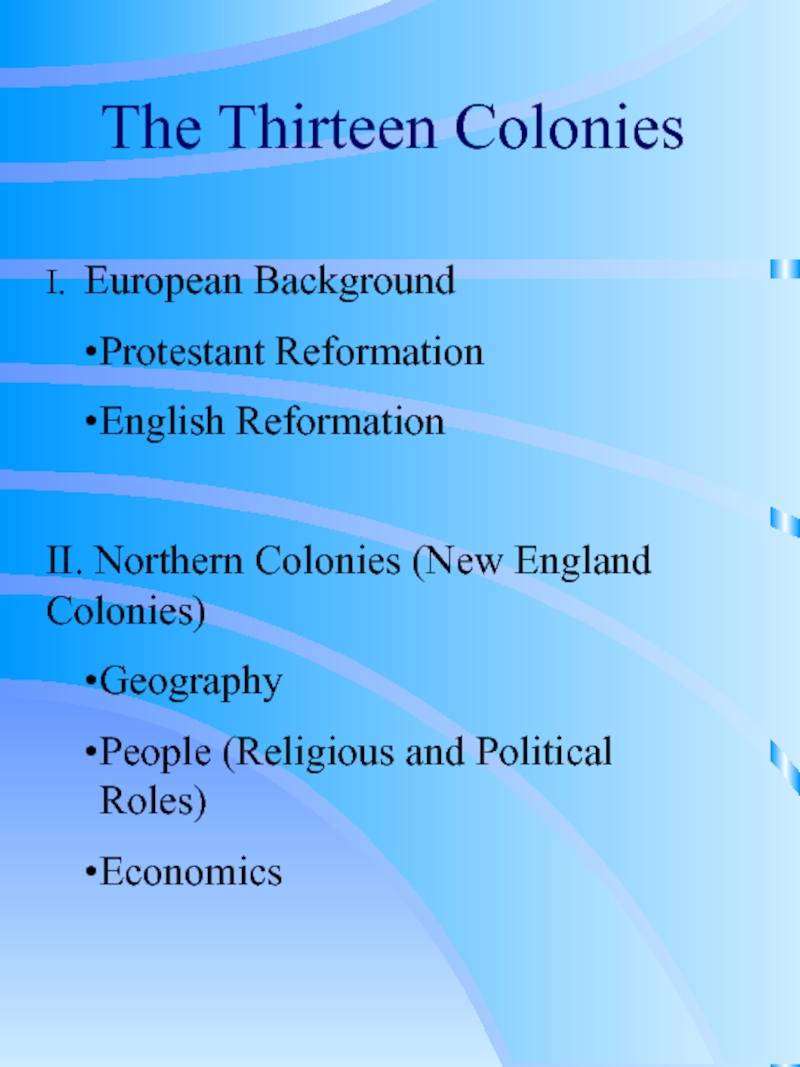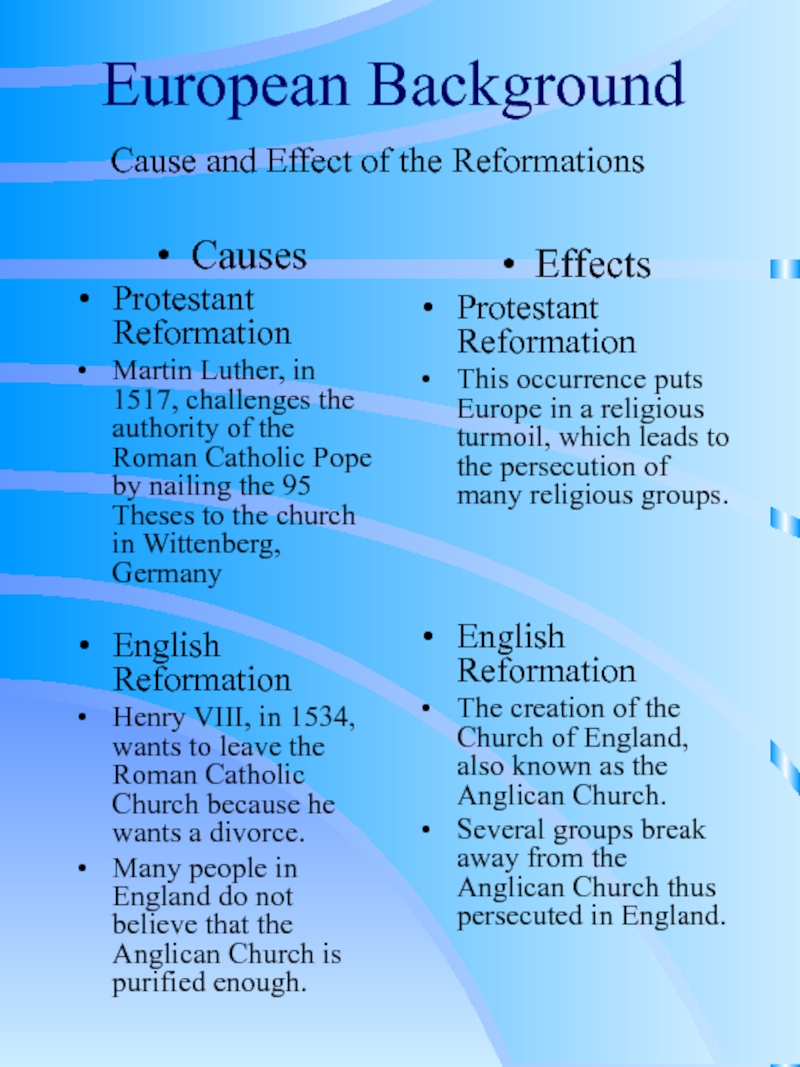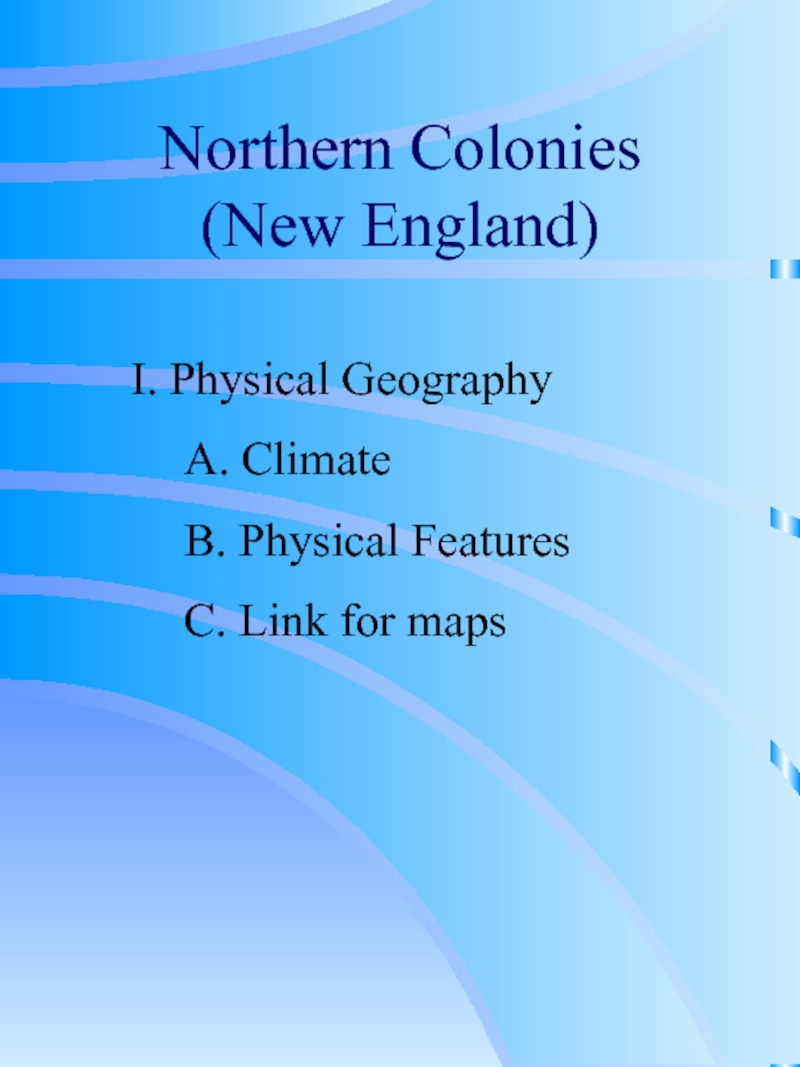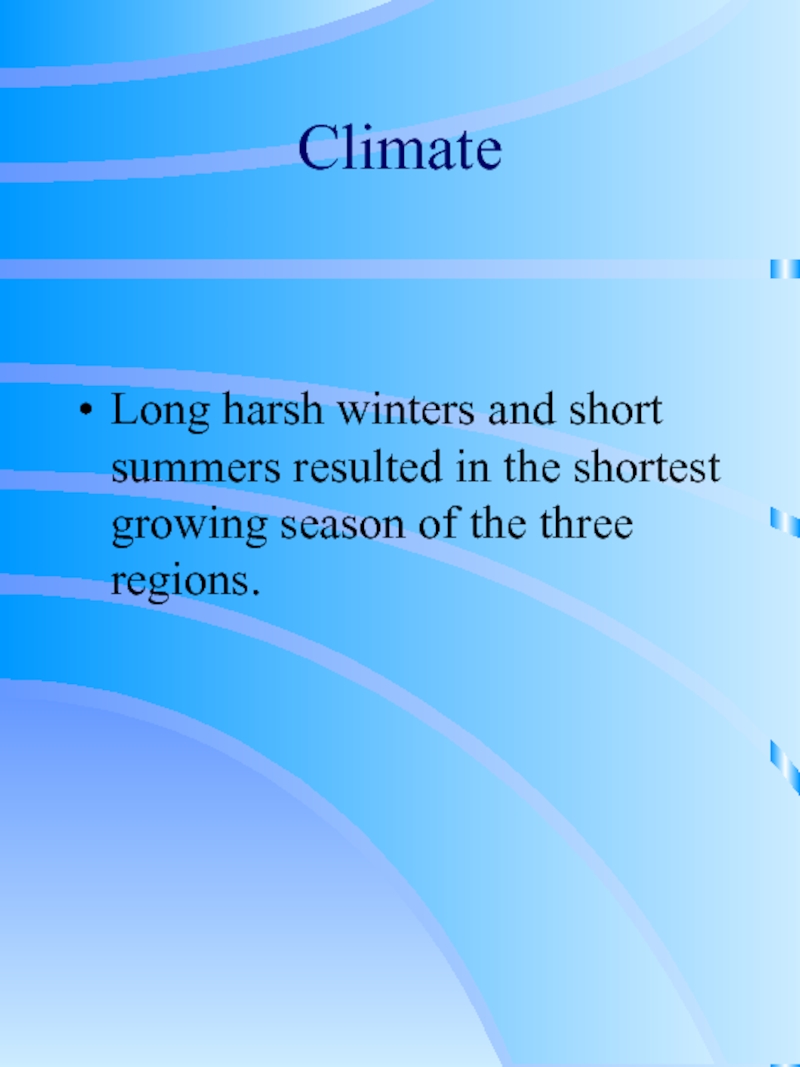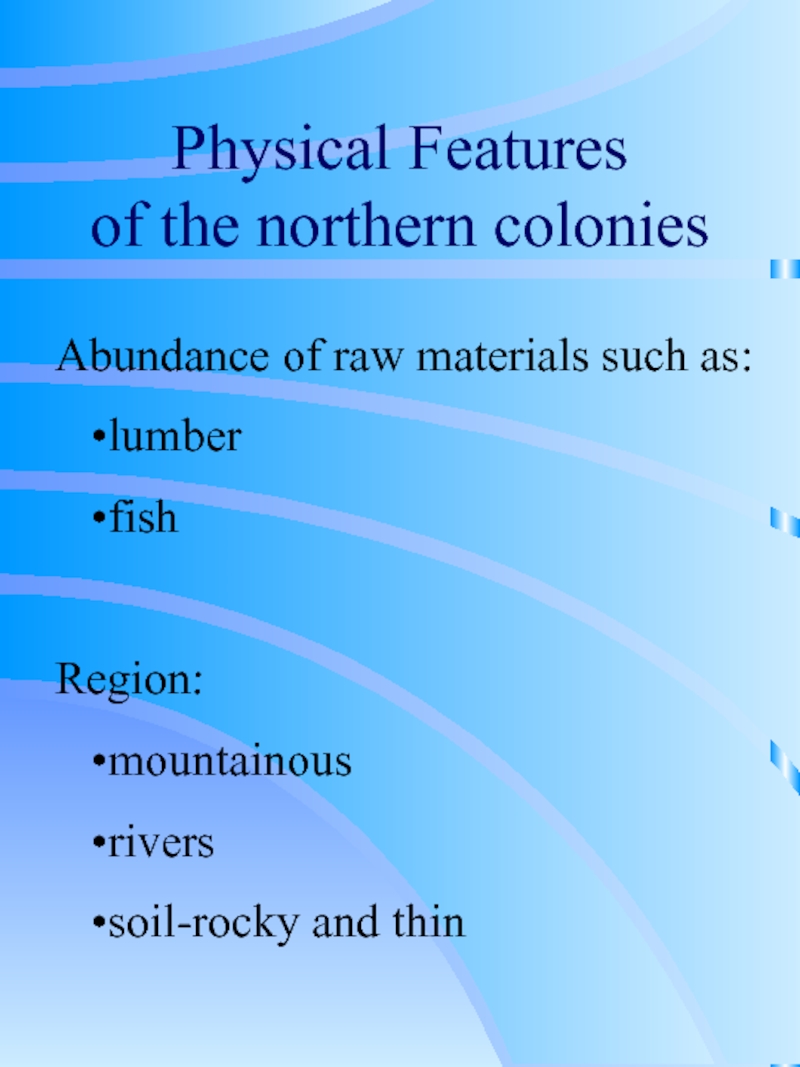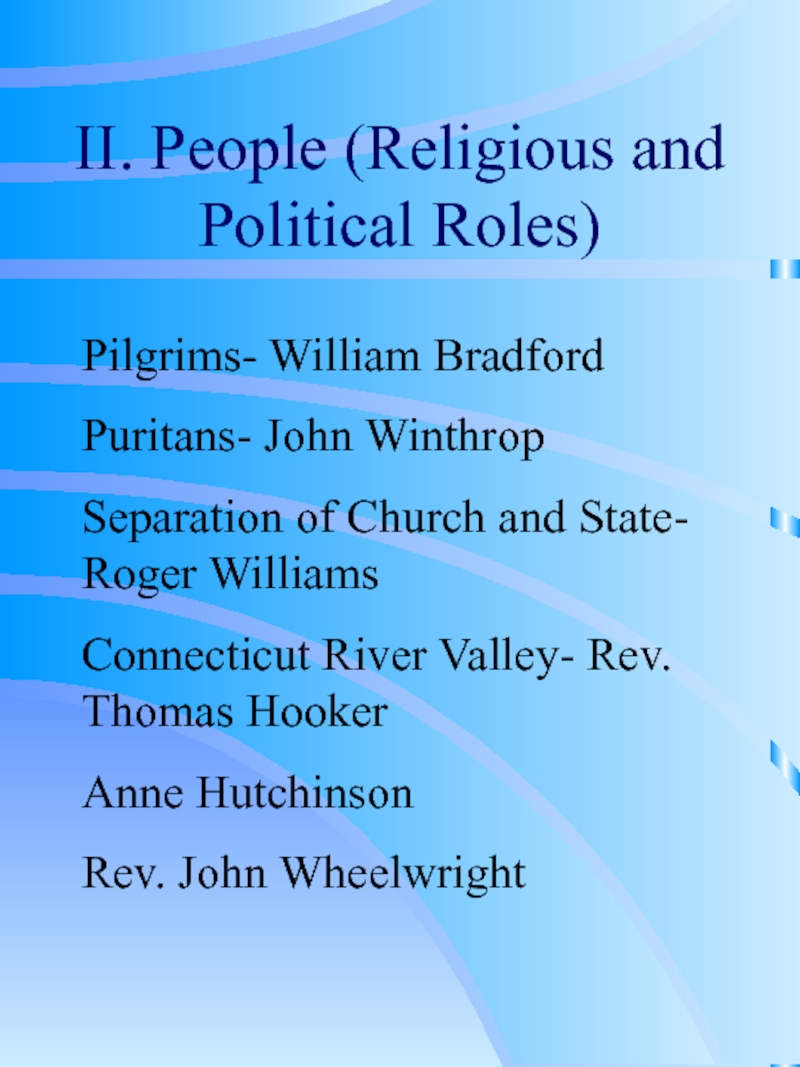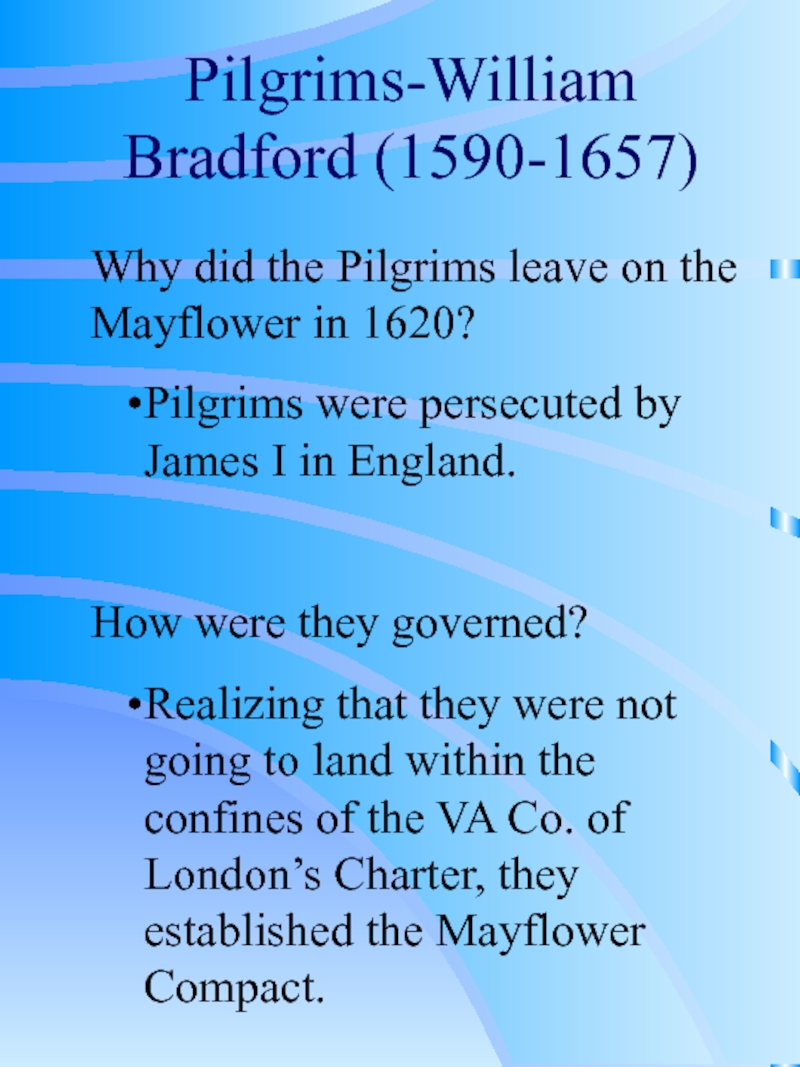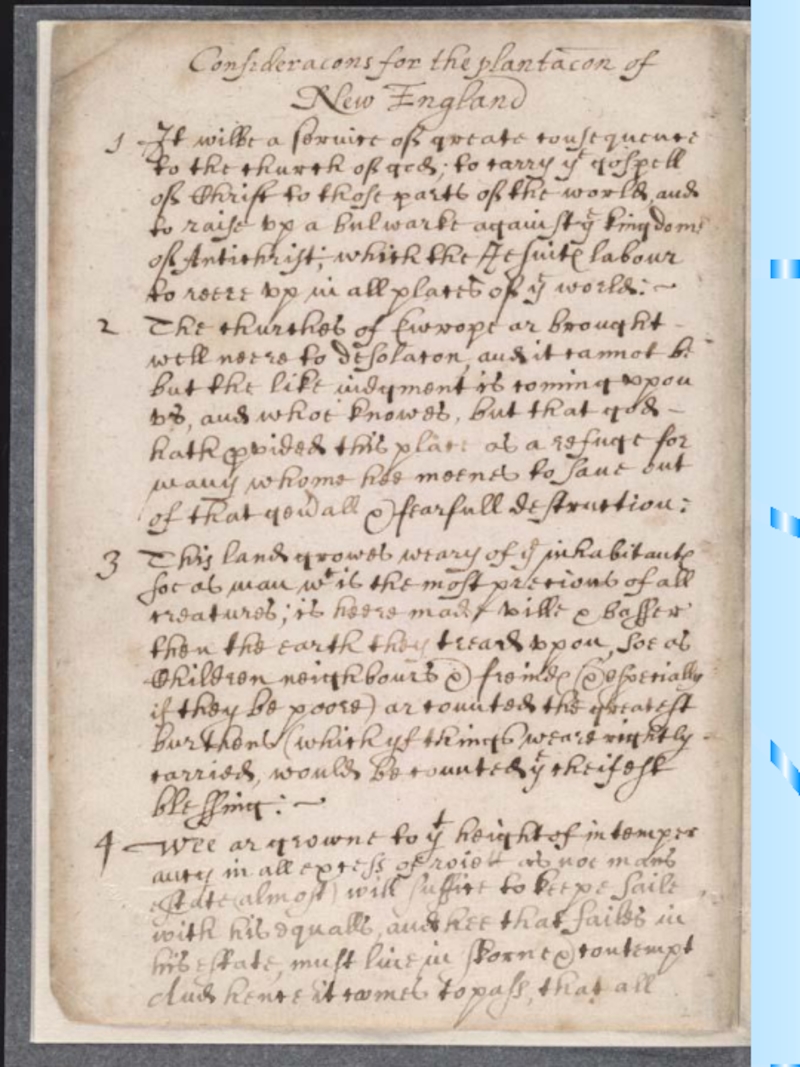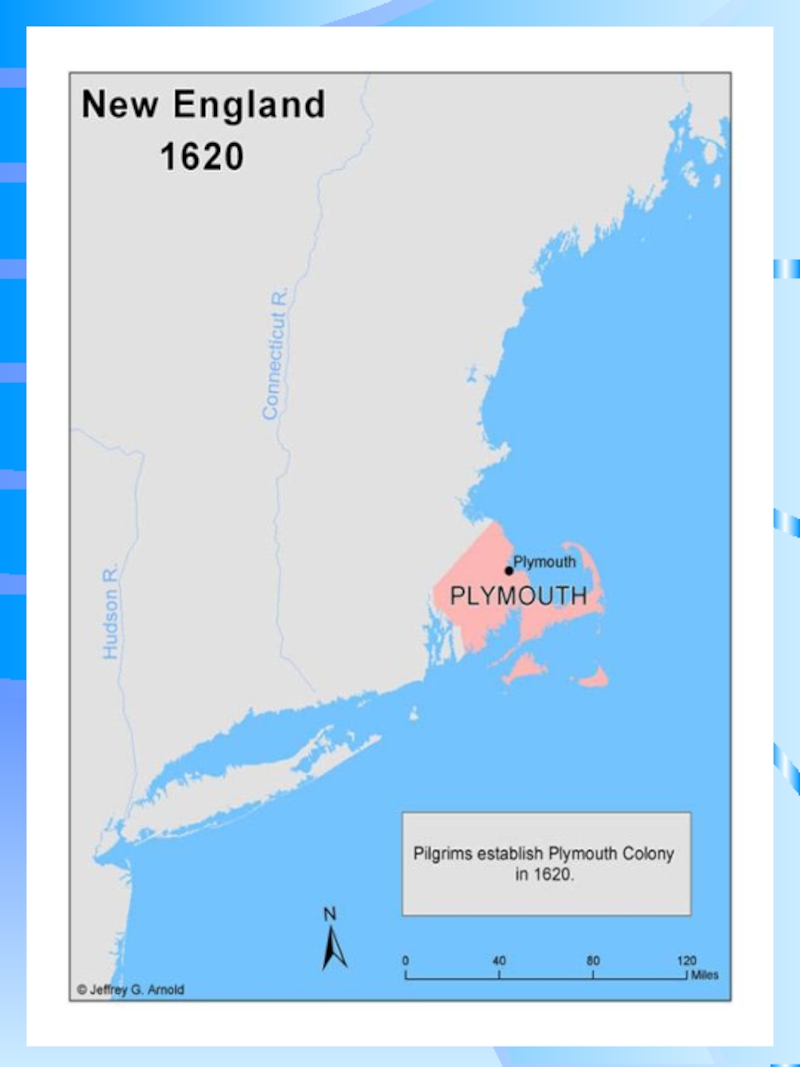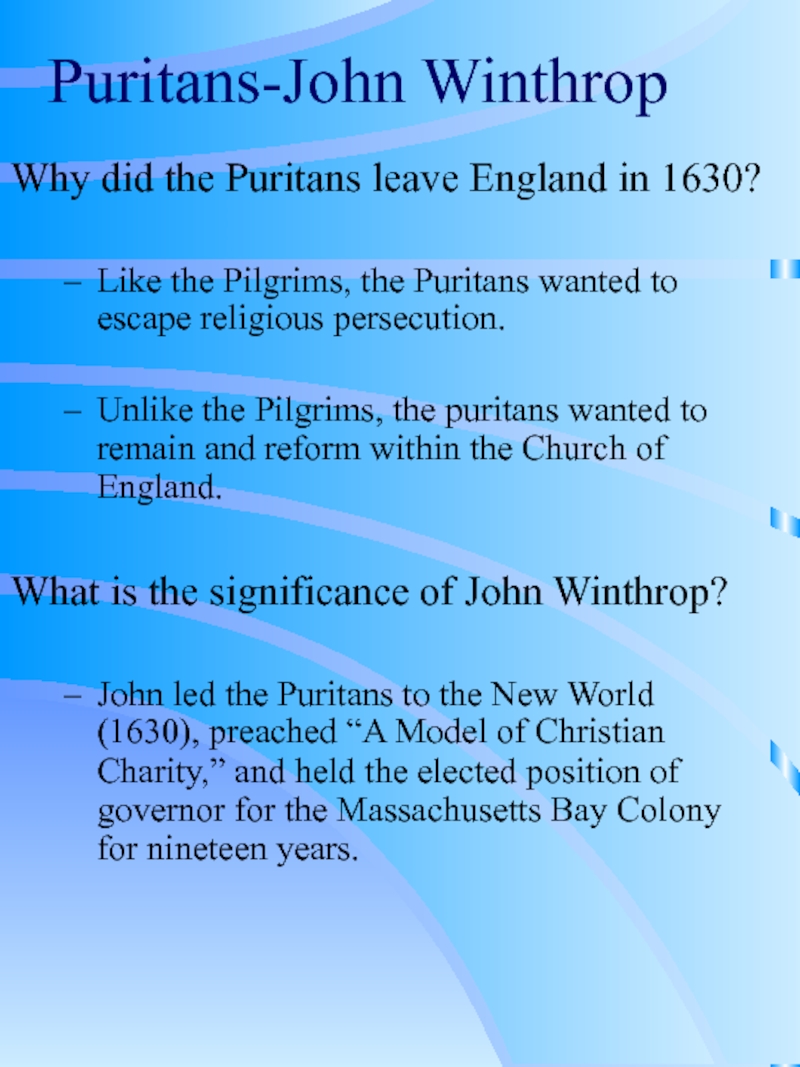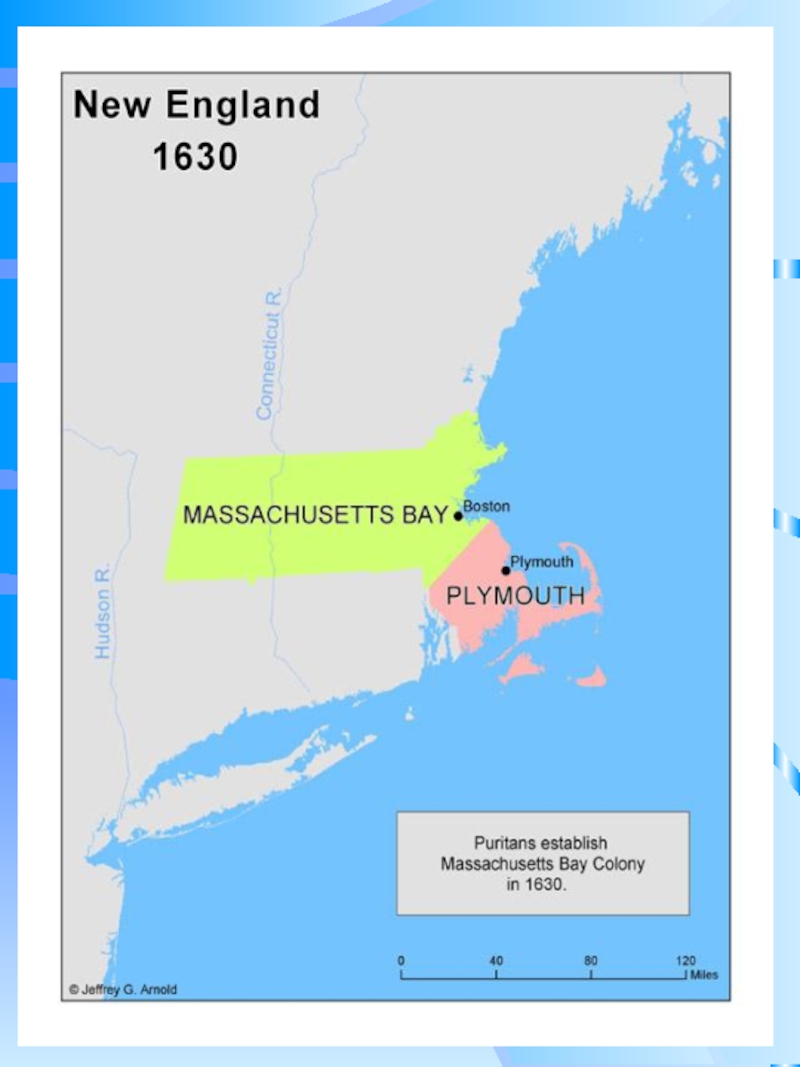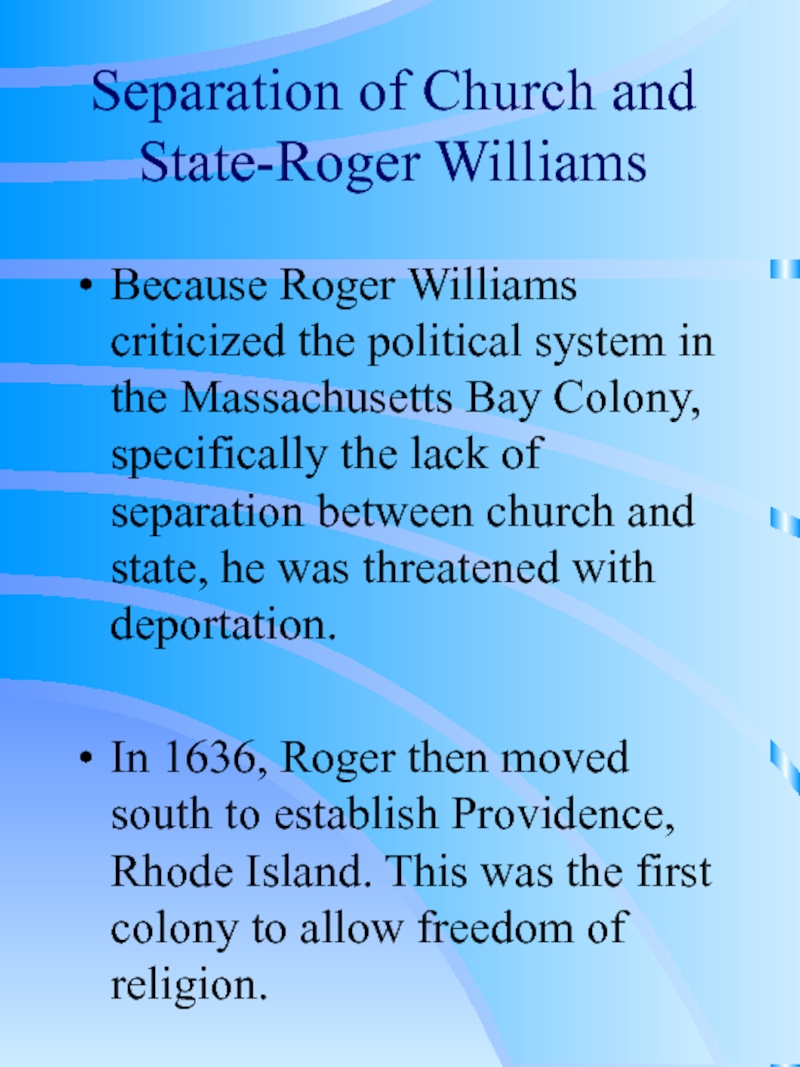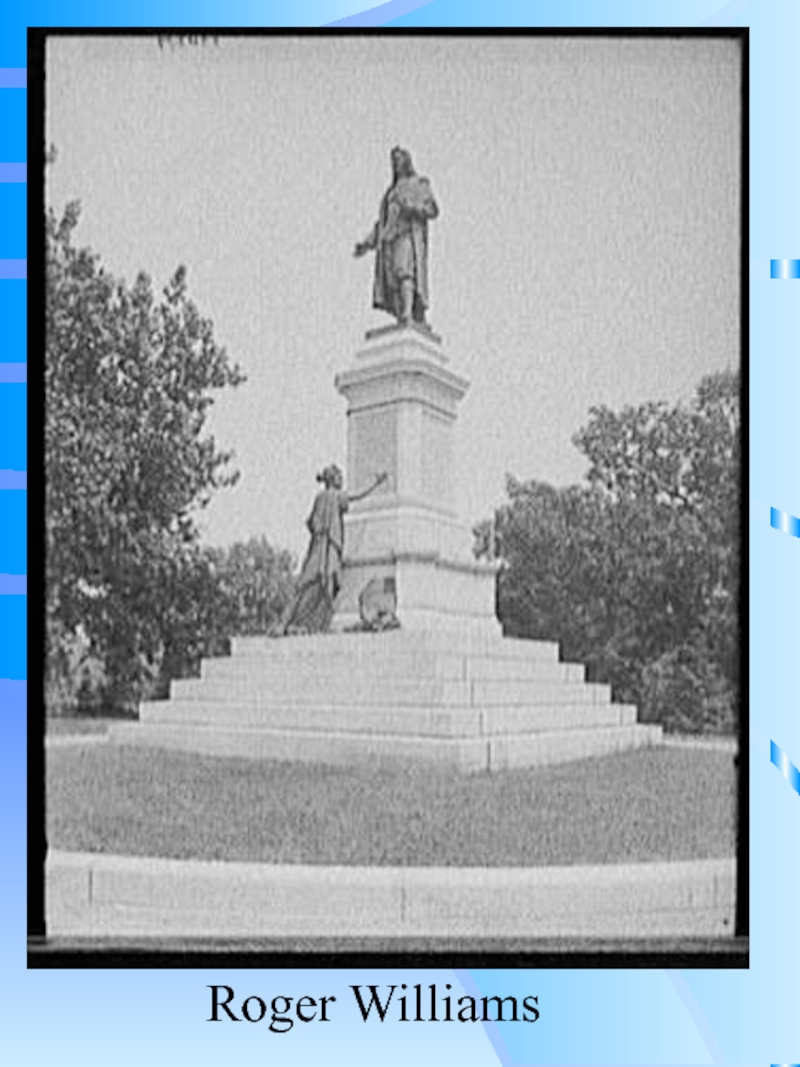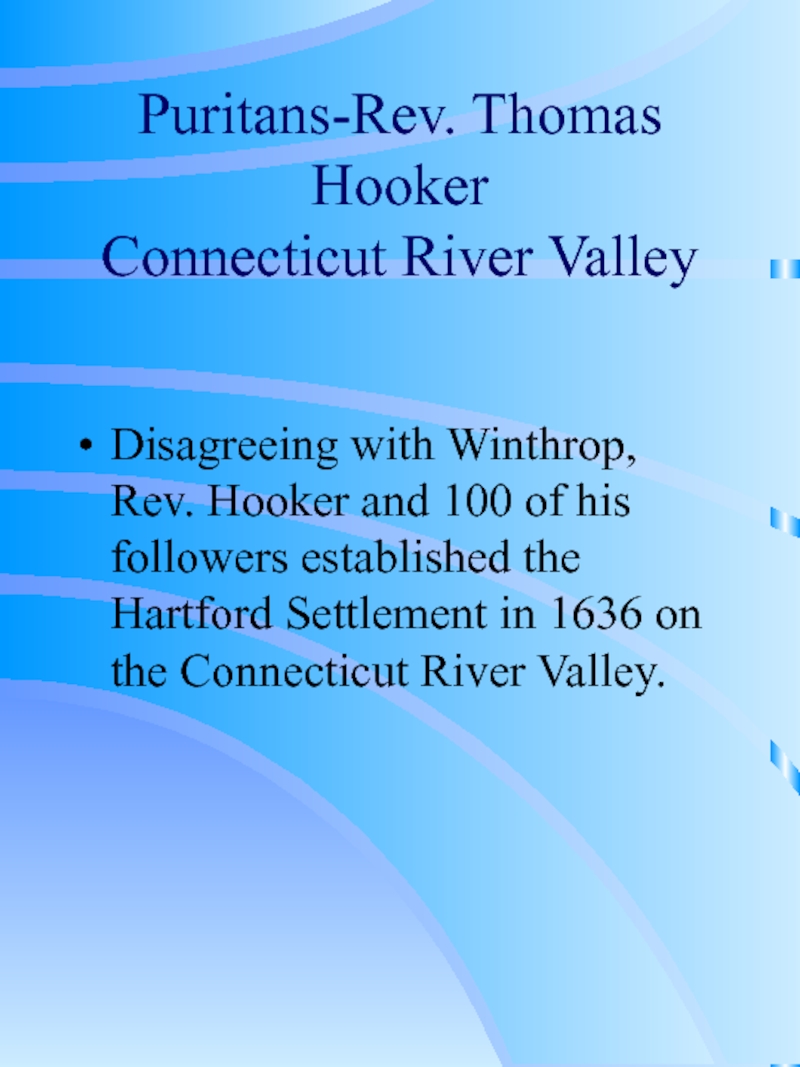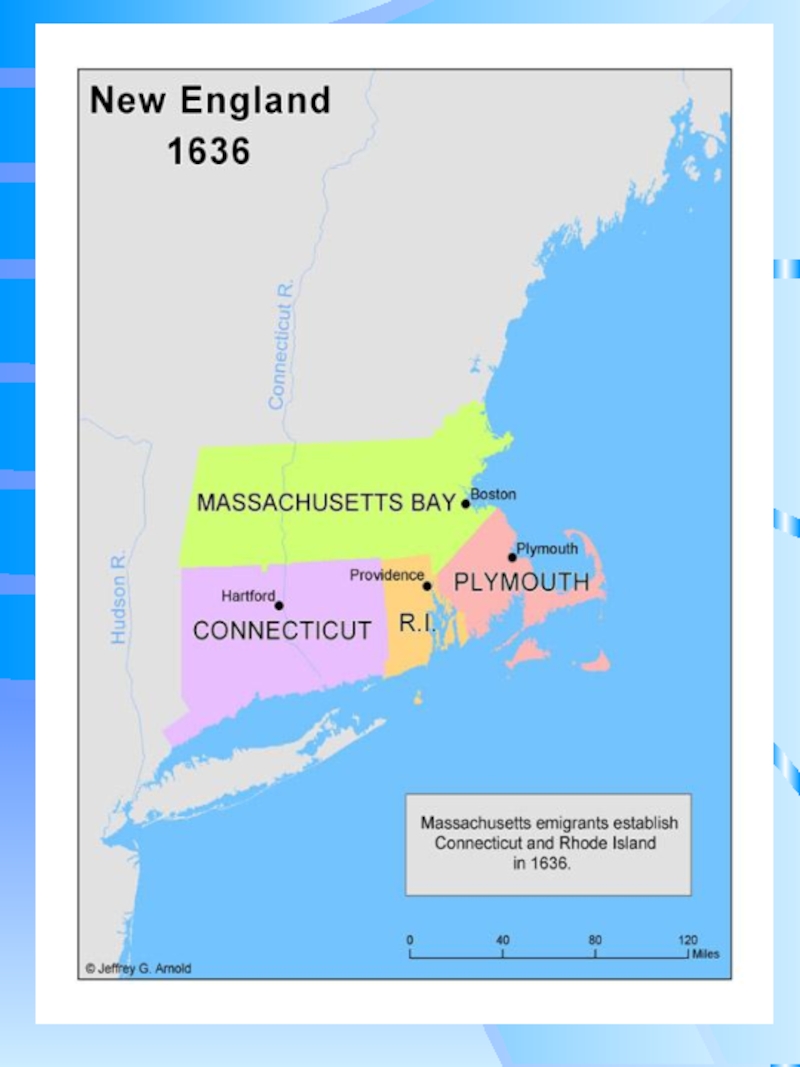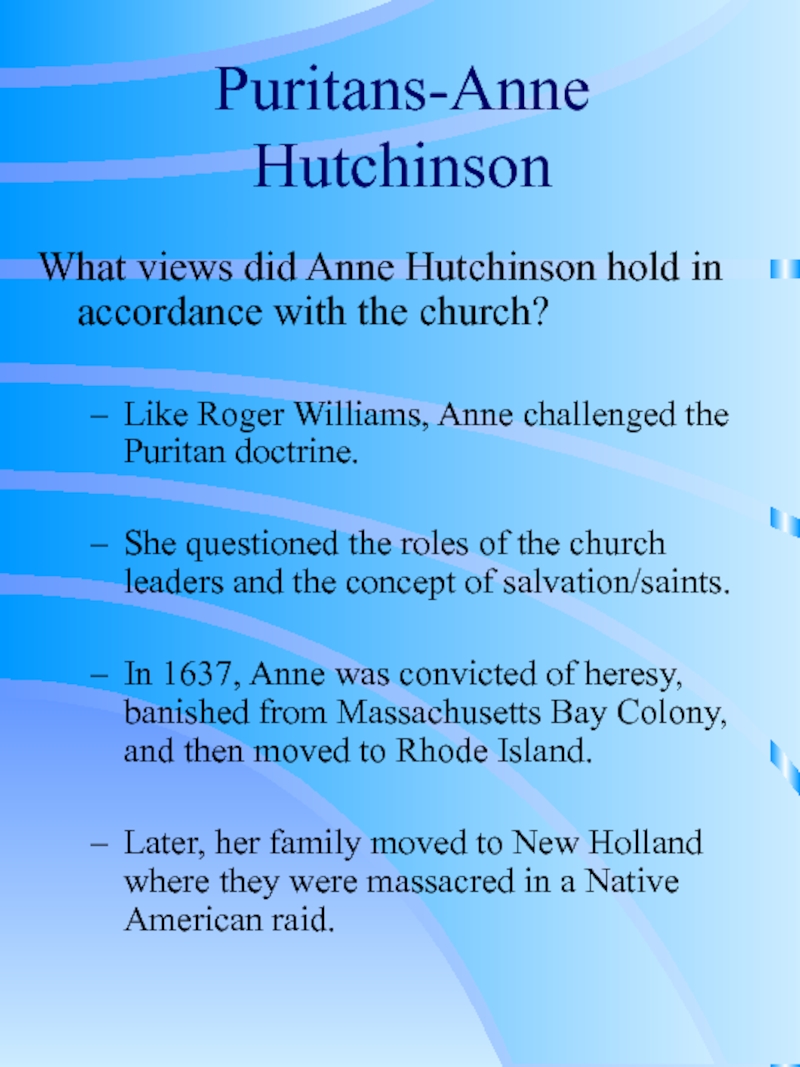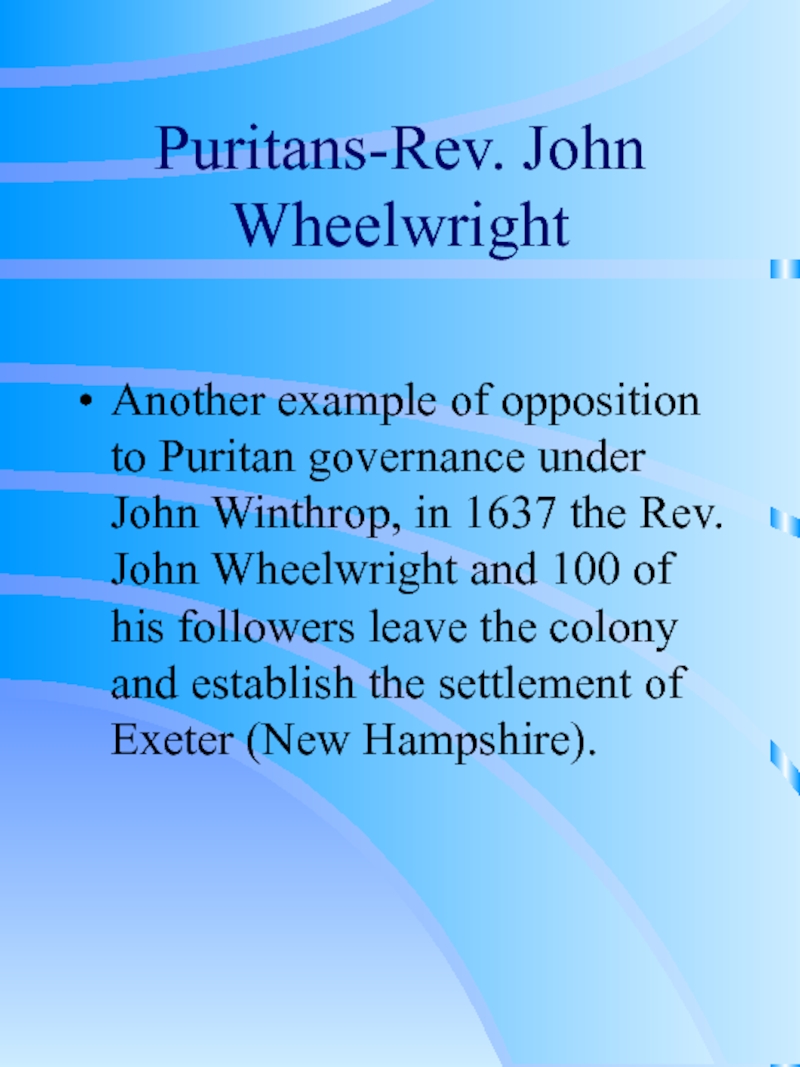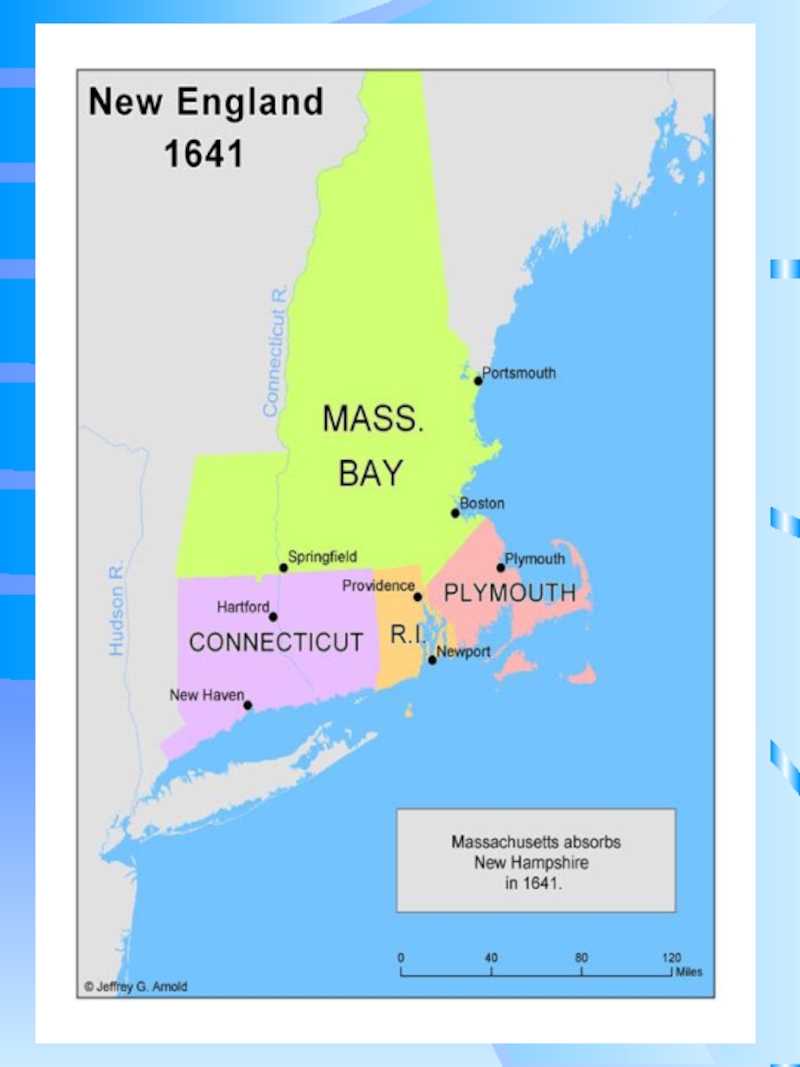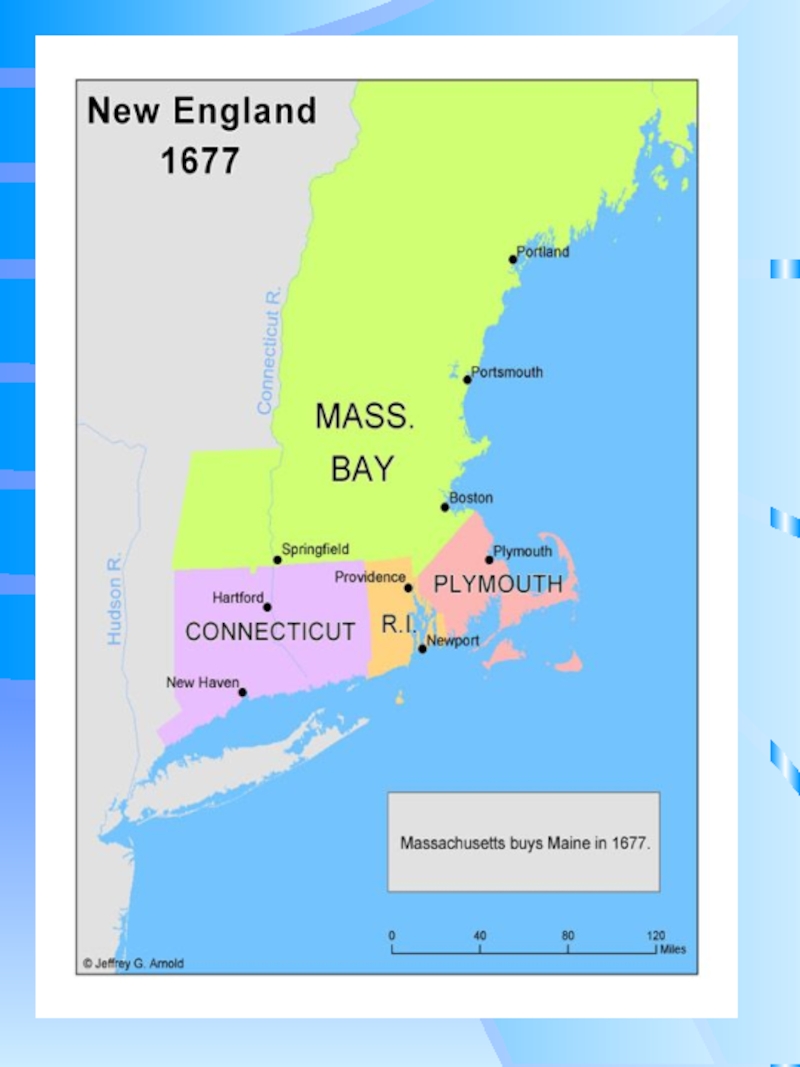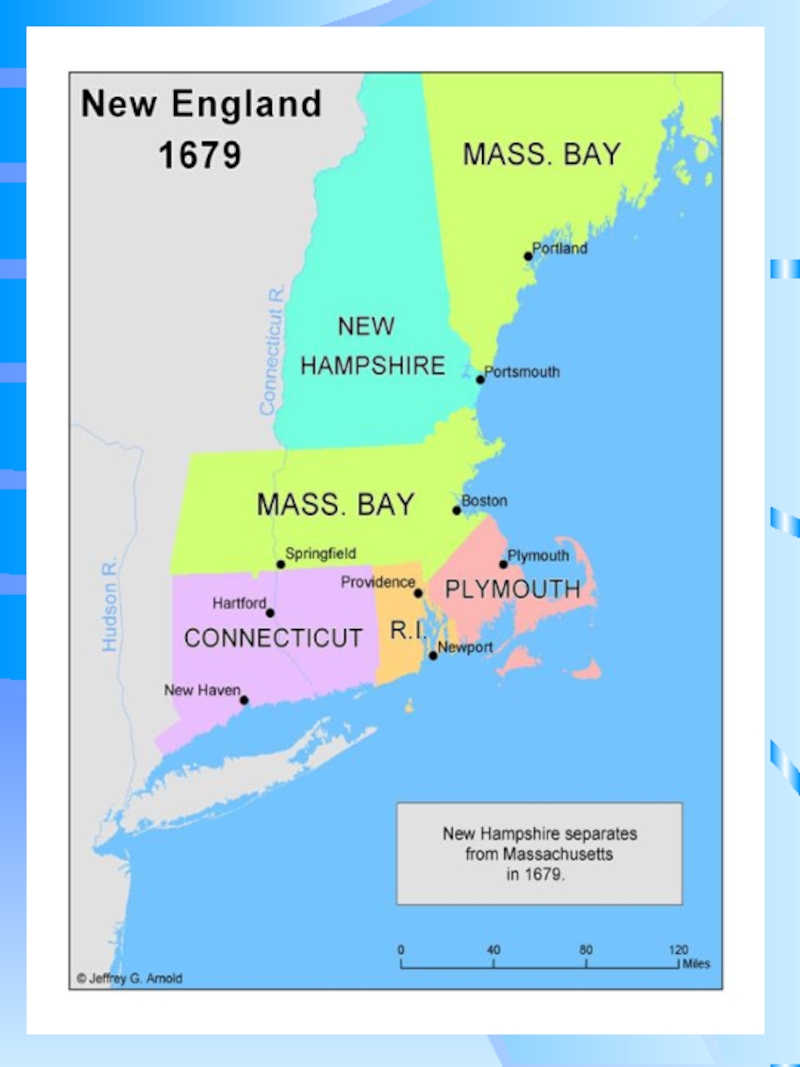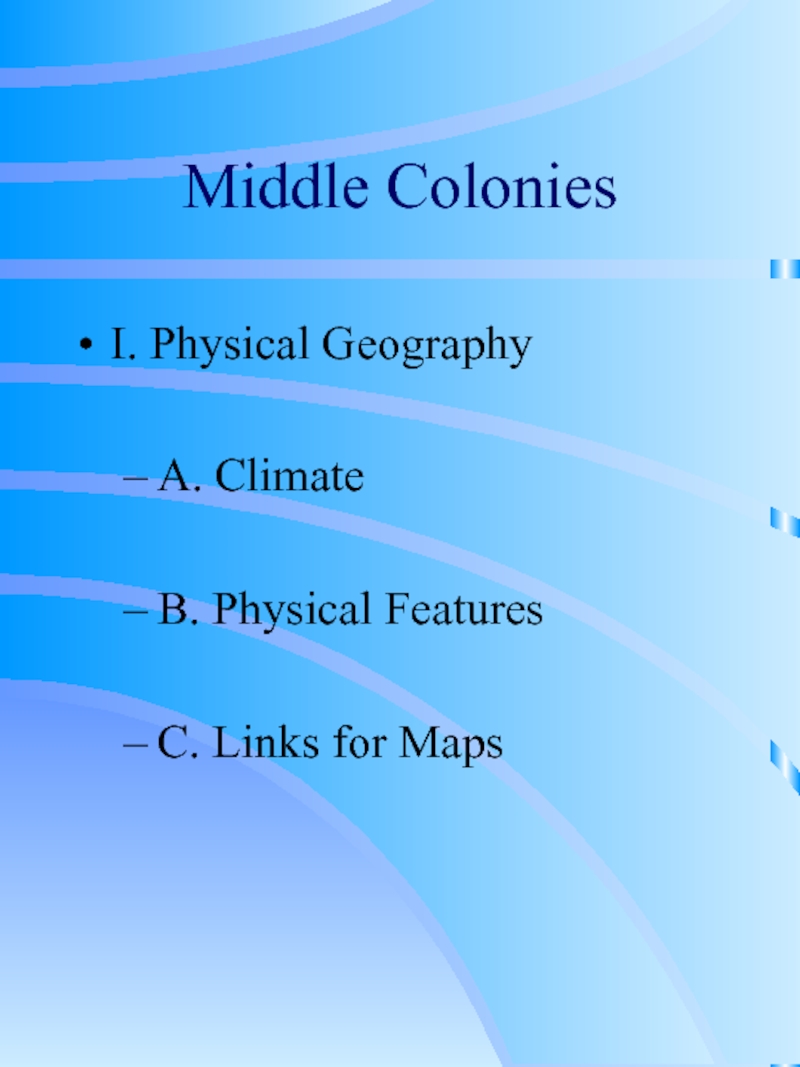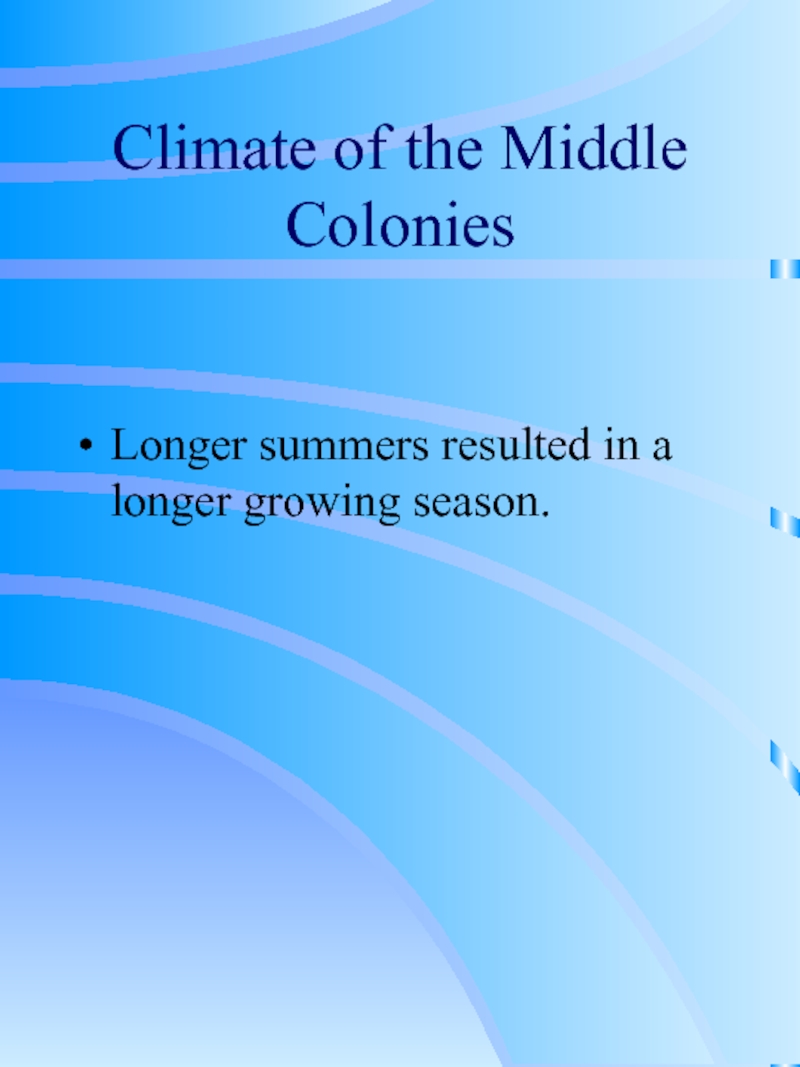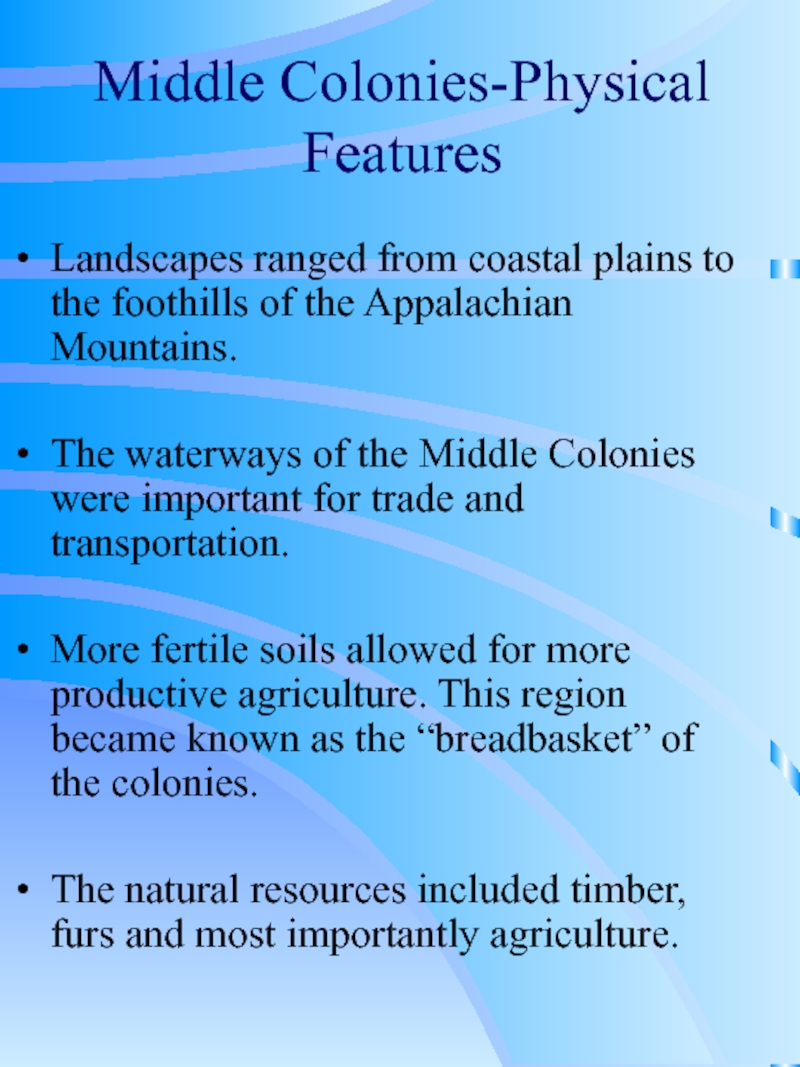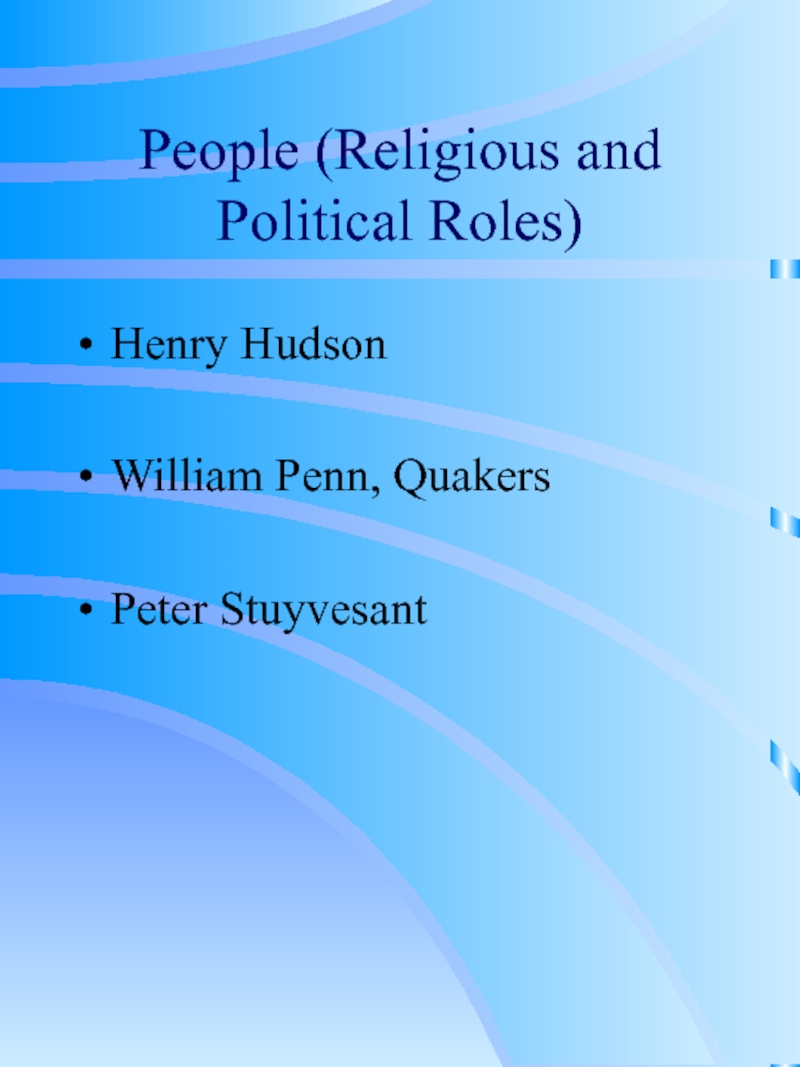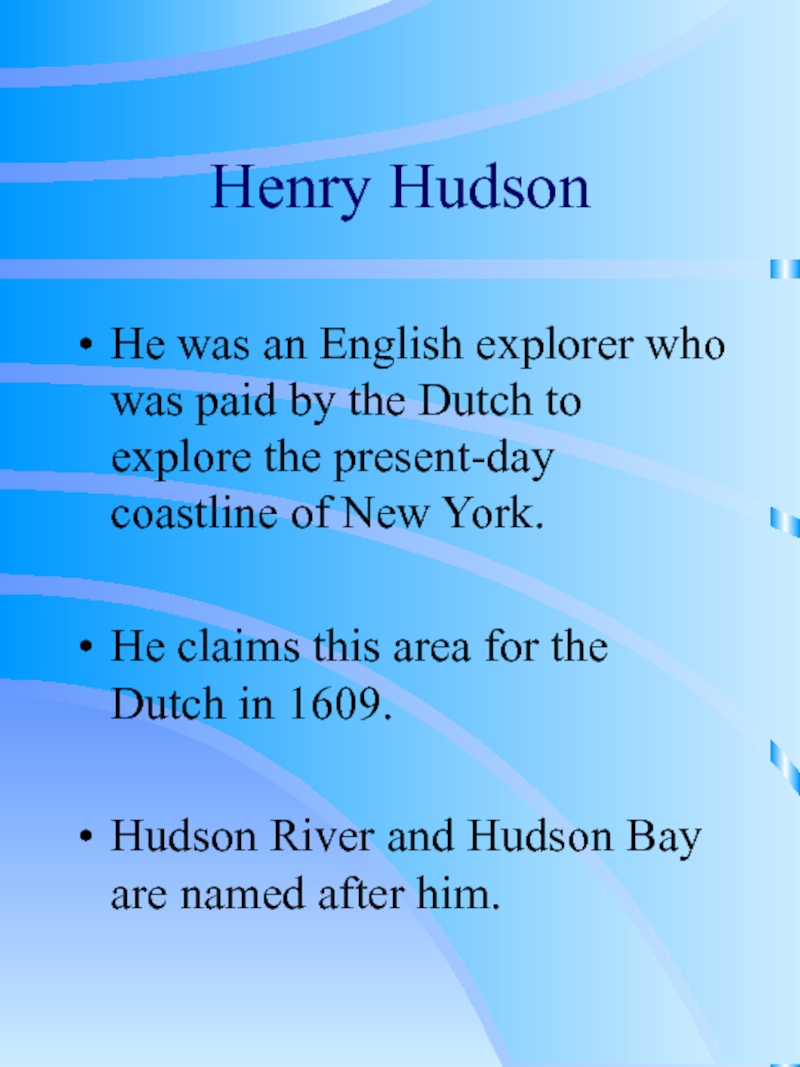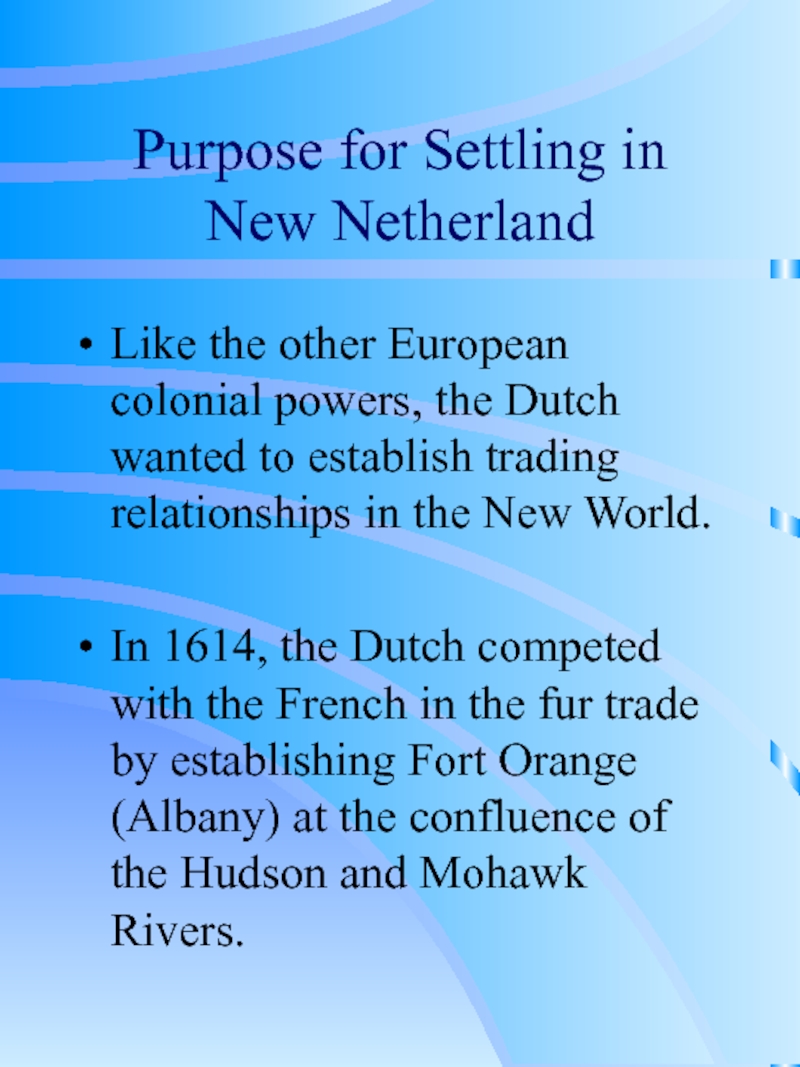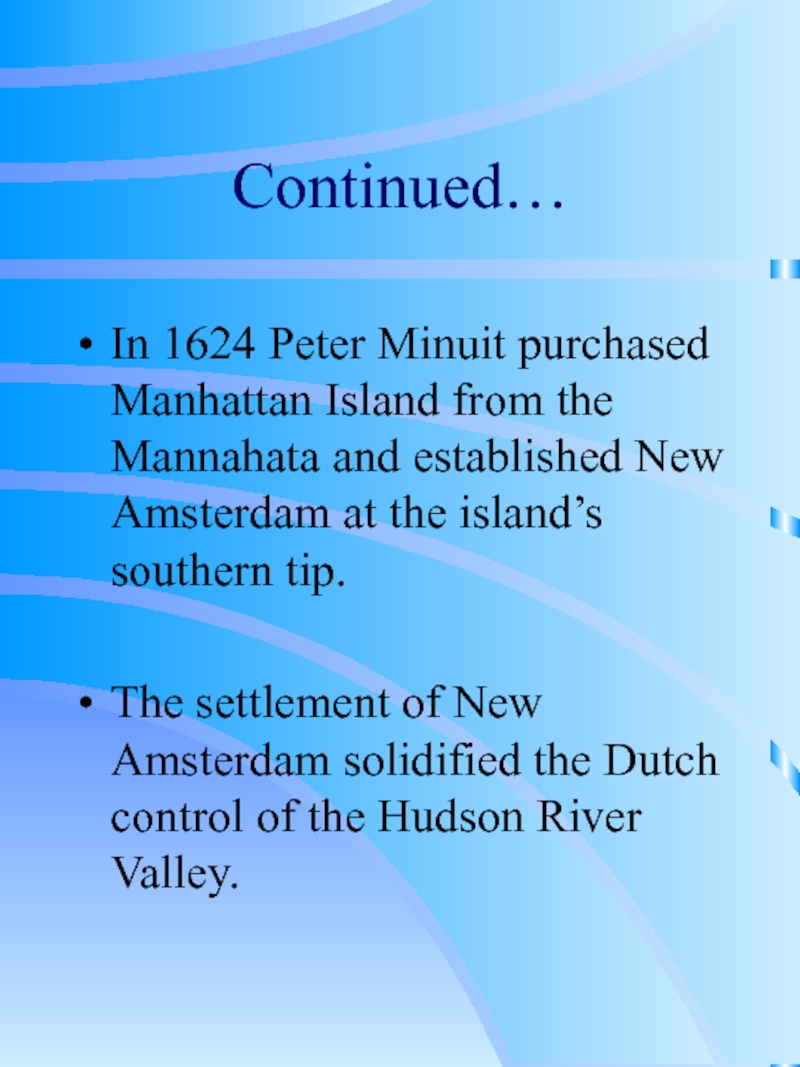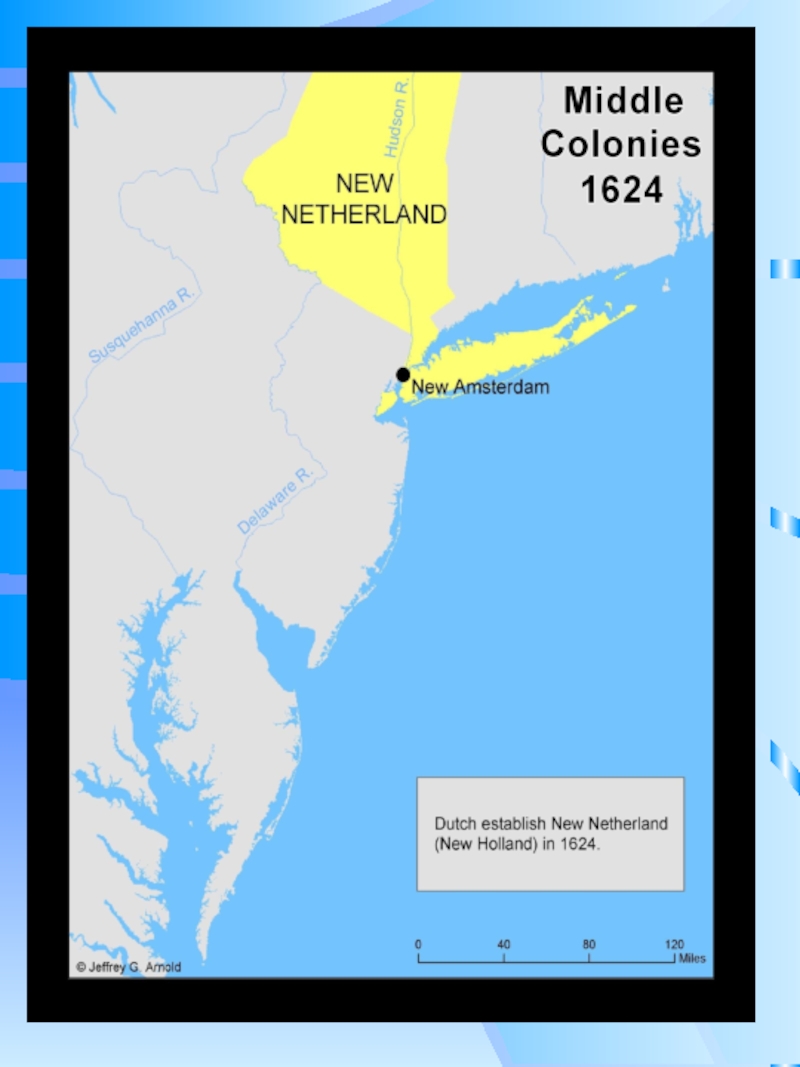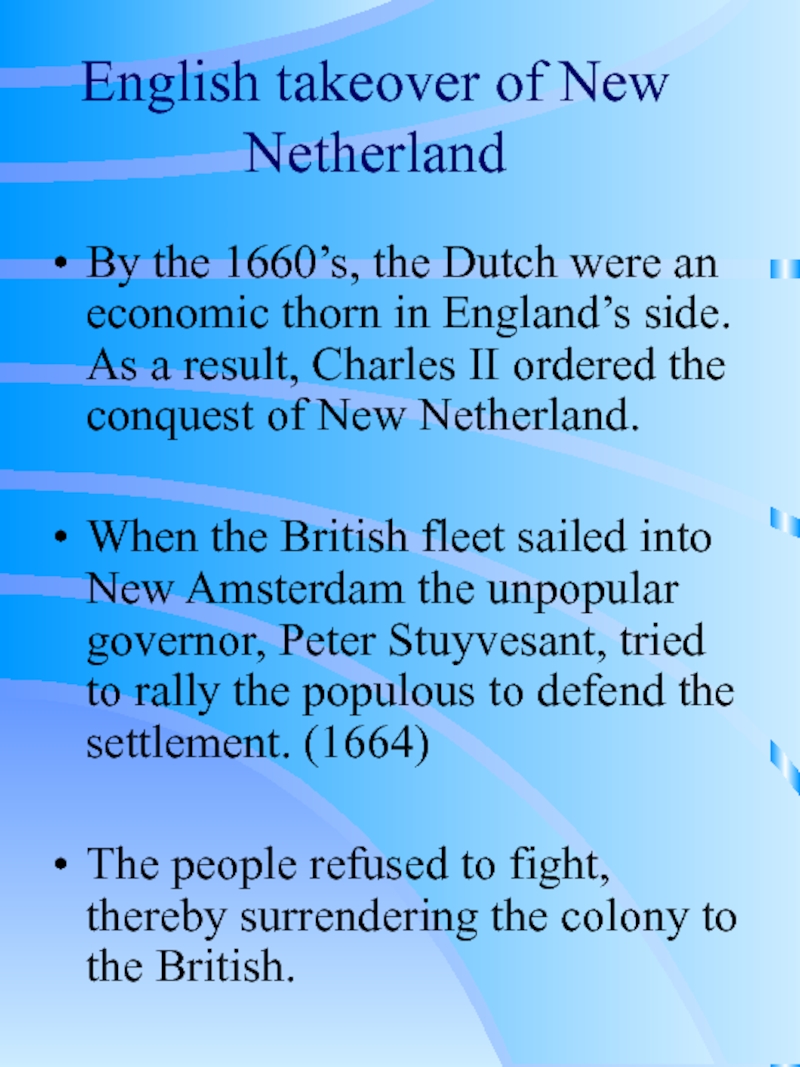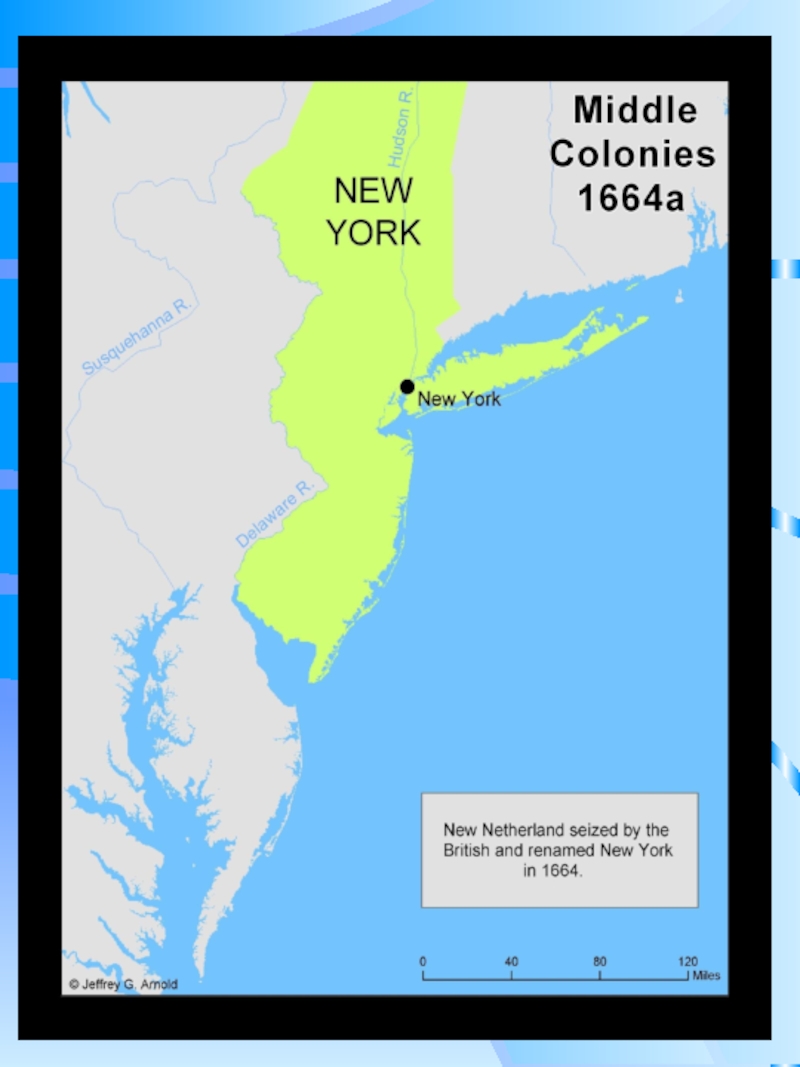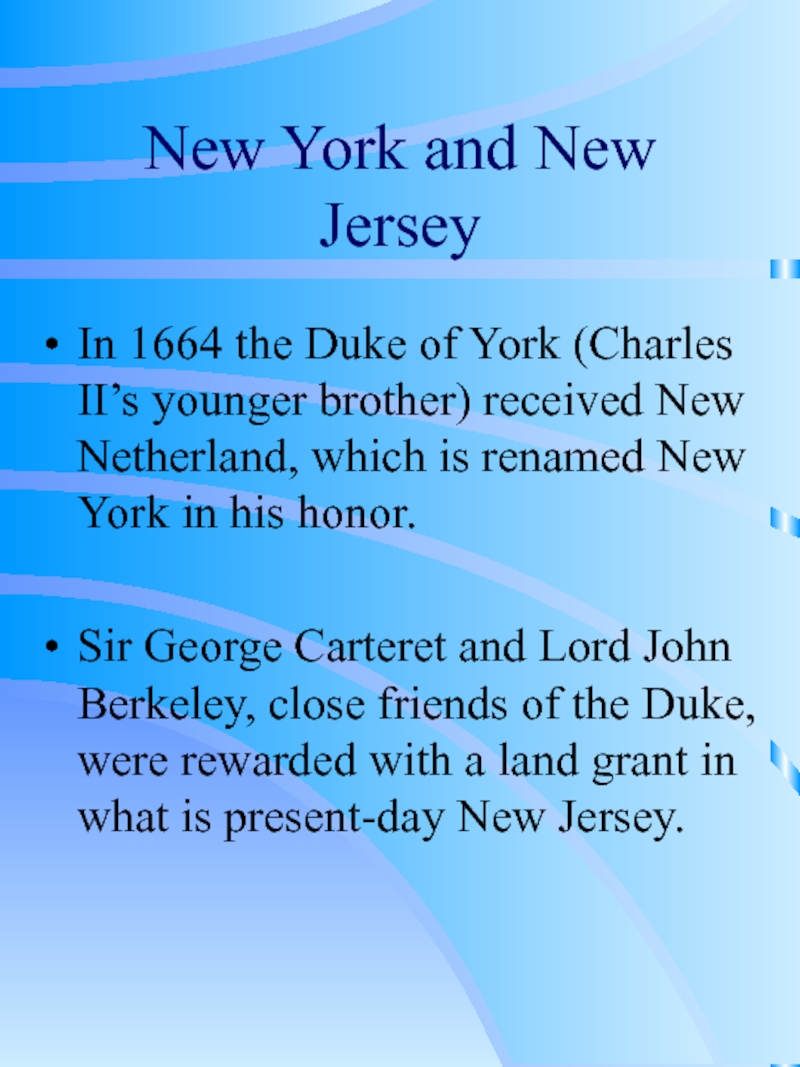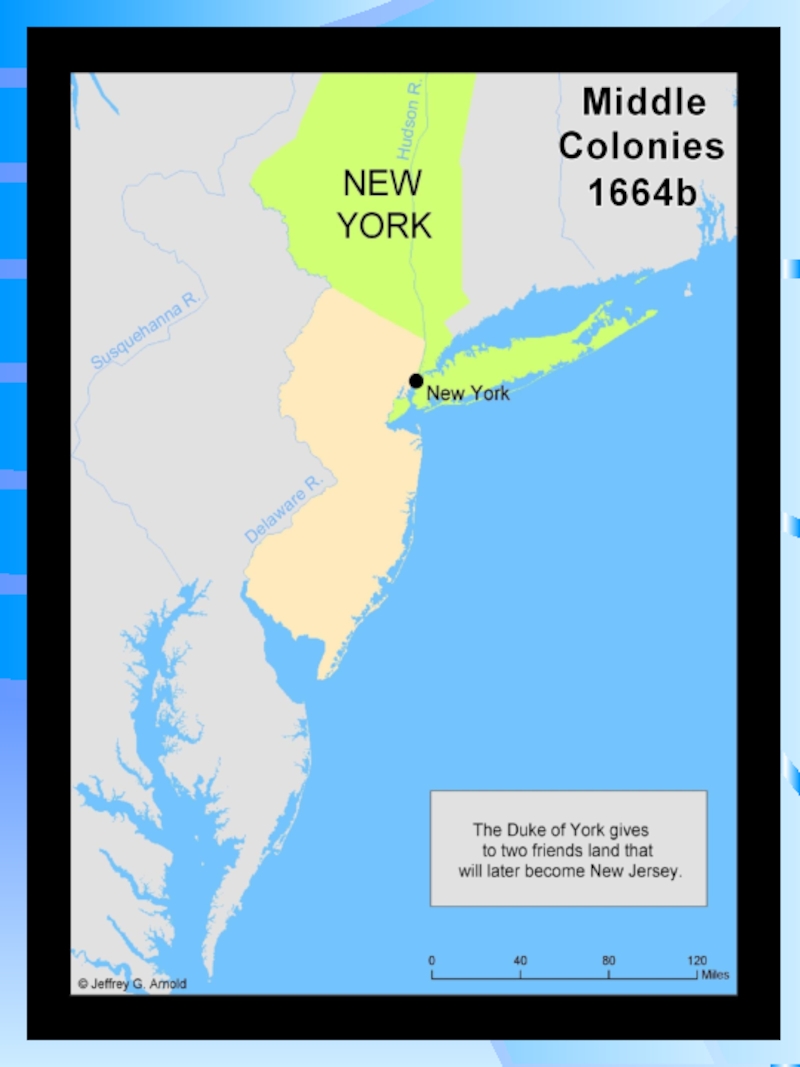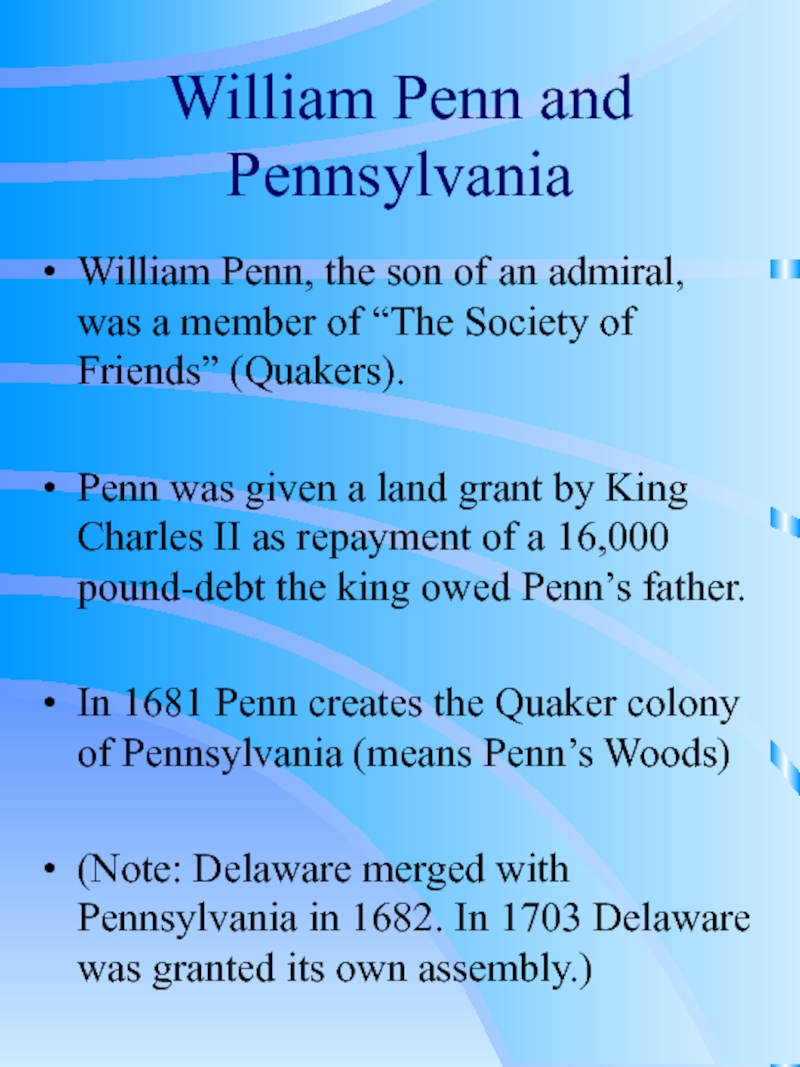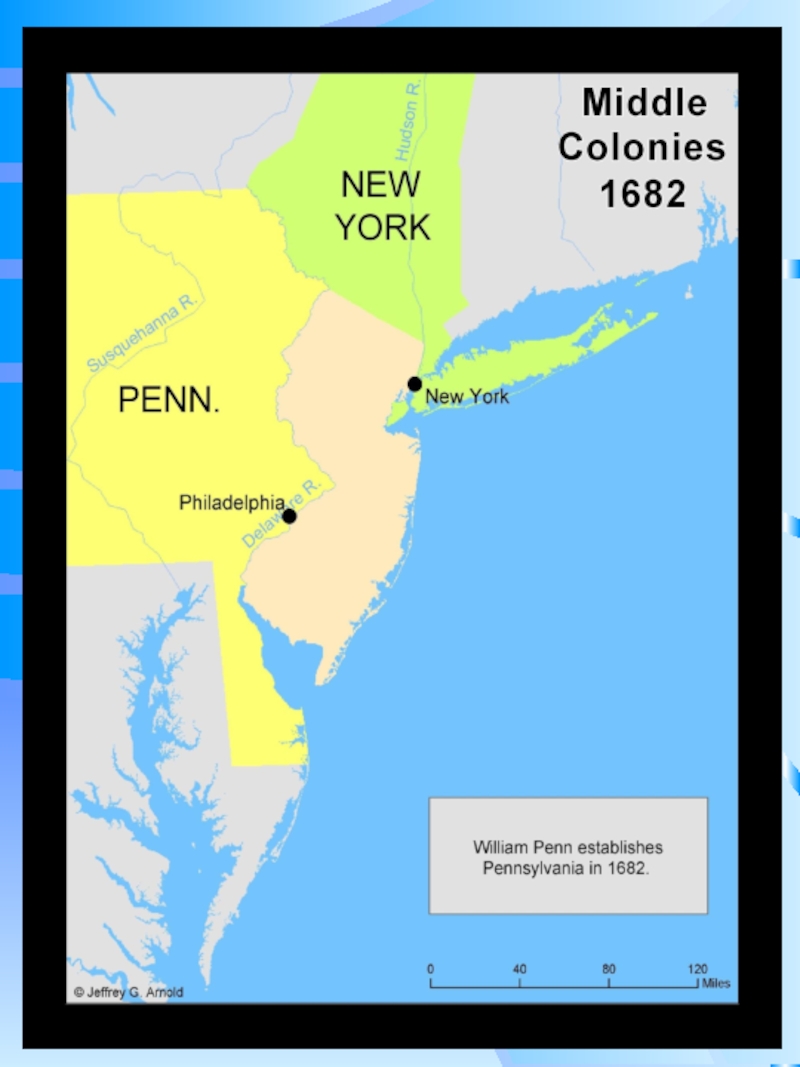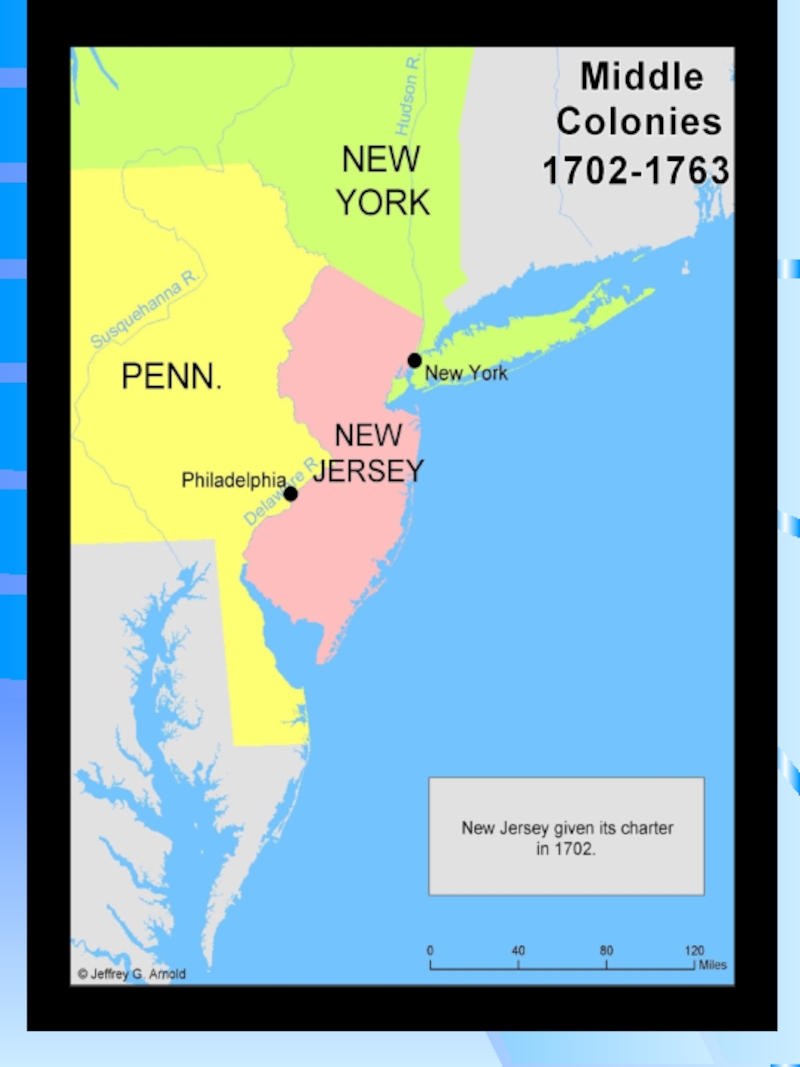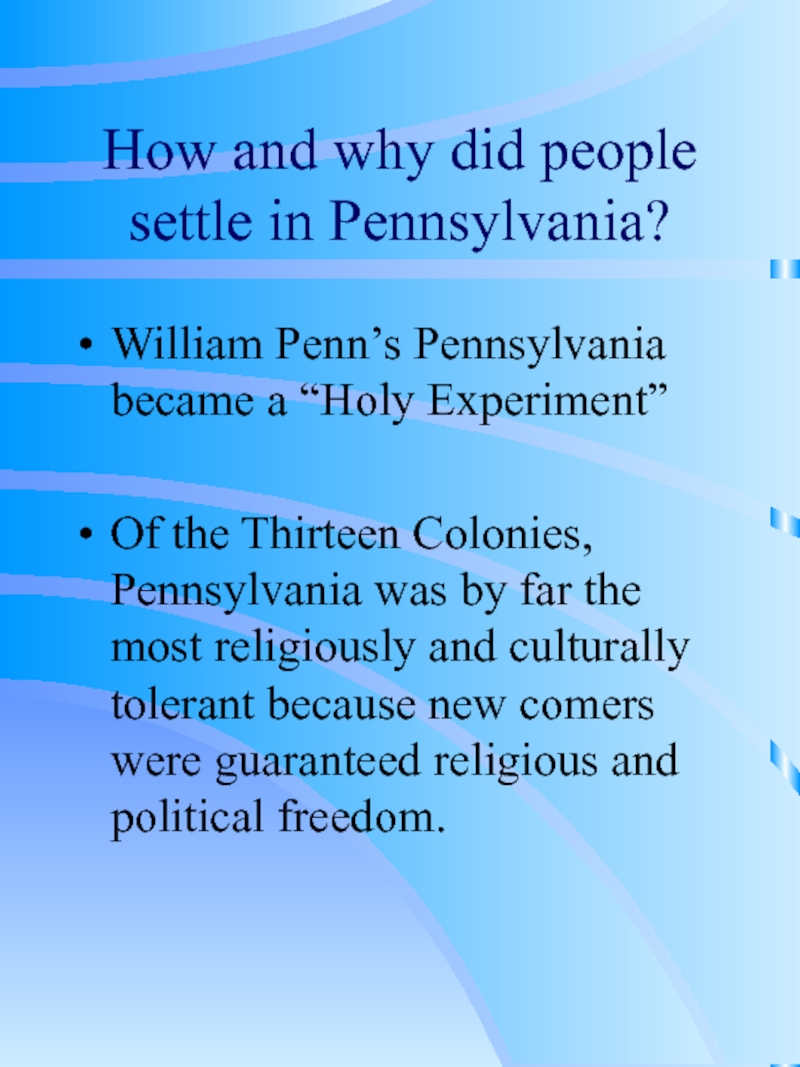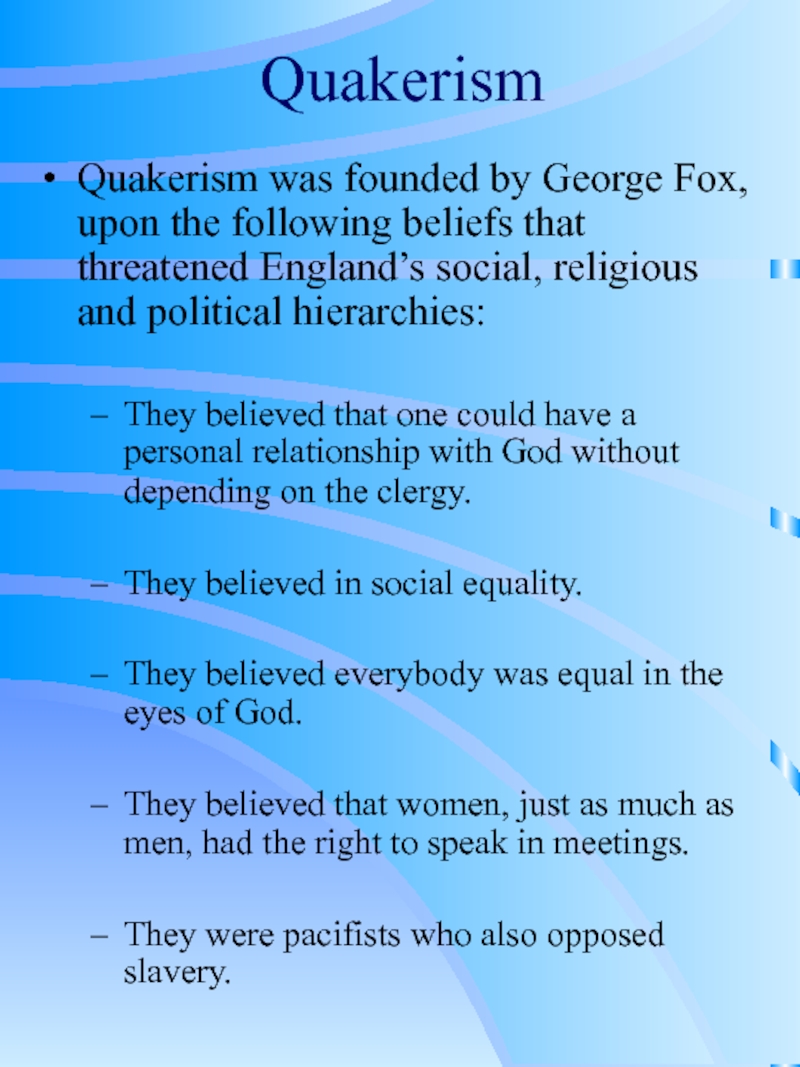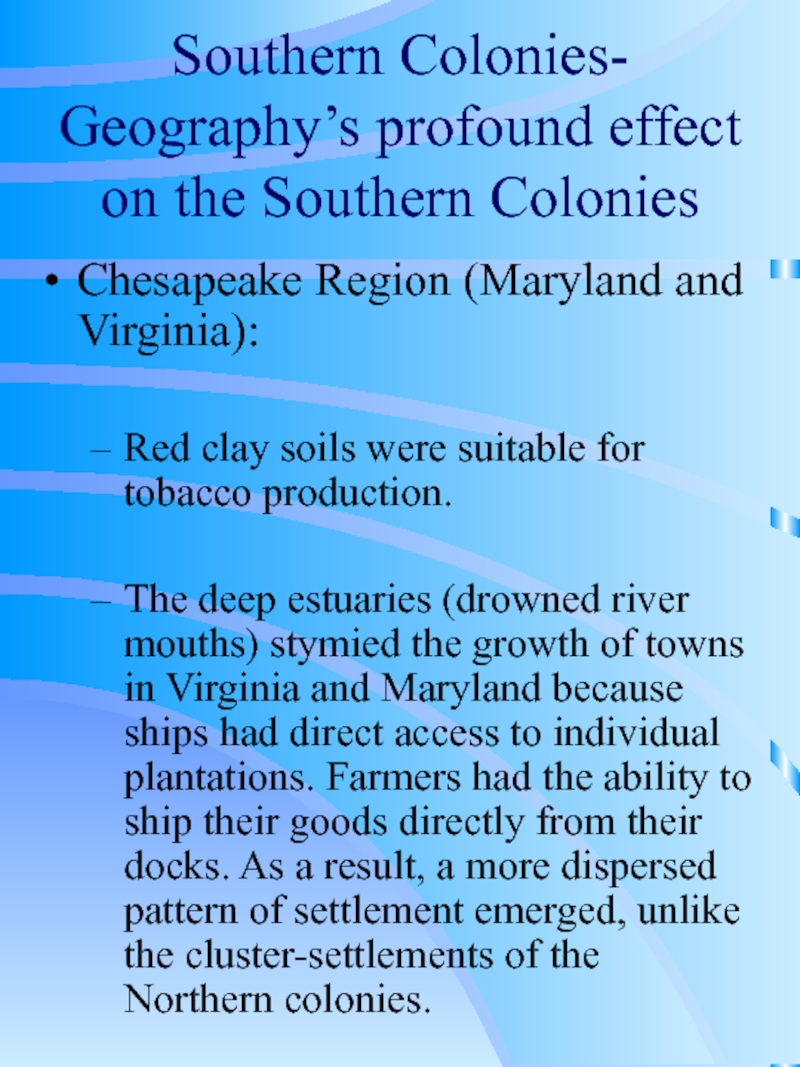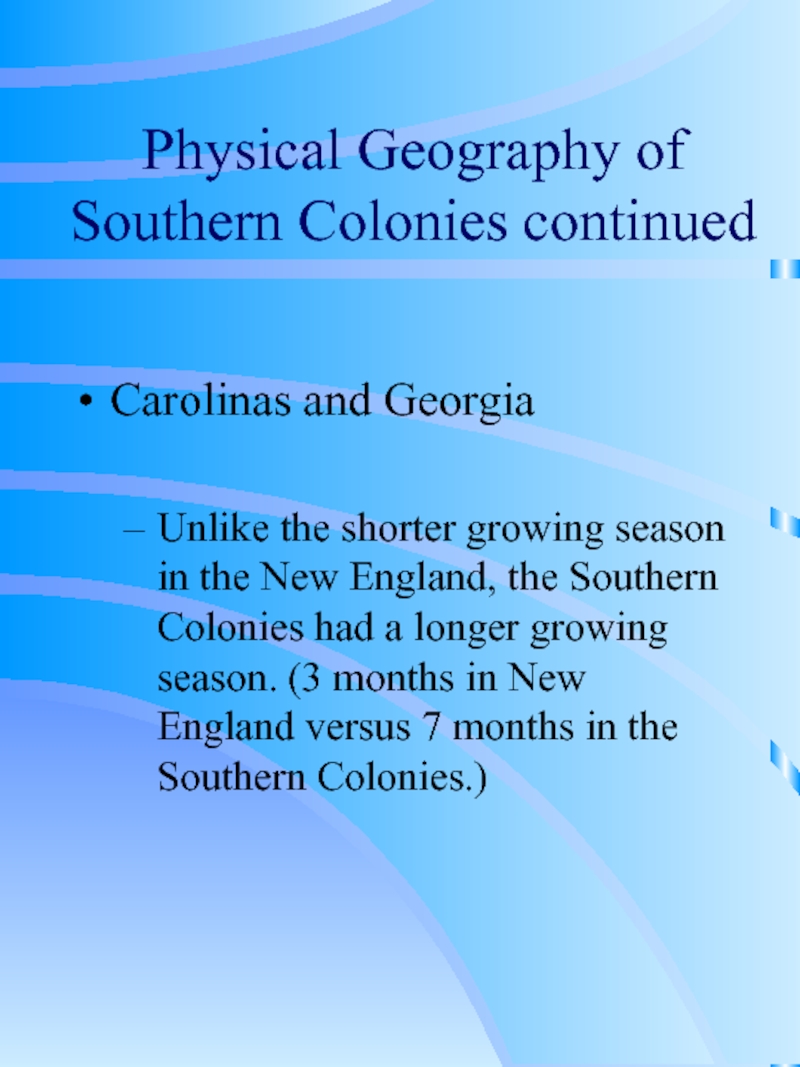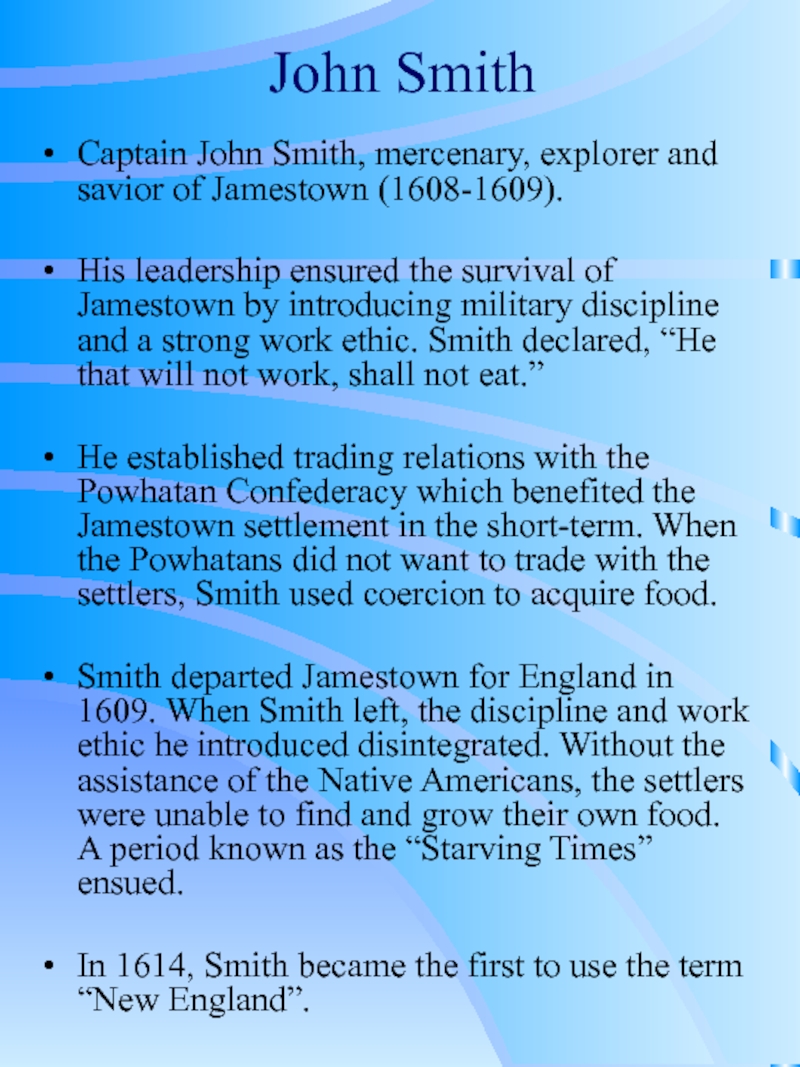- Главная
- Разное
- Дизайн
- Бизнес и предпринимательство
- Аналитика
- Образование
- Развлечения
- Красота и здоровье
- Финансы
- Государство
- Путешествия
- Спорт
- Недвижимость
- Армия
- Графика
- Культурология
- Еда и кулинария
- Лингвистика
- Английский язык
- Астрономия
- Алгебра
- Биология
- География
- Детские презентации
- Информатика
- История
- Литература
- Маркетинг
- Математика
- Медицина
- Менеджмент
- Музыка
- МХК
- Немецкий язык
- ОБЖ
- Обществознание
- Окружающий мир
- Педагогика
- Русский язык
- Технология
- Физика
- Философия
- Химия
- Шаблоны, картинки для презентаций
- Экология
- Экономика
- Юриспруденция
TQE Social Studies. The Thirteen Colonies презентация
Содержание
- 1. TQE Social Studies. The Thirteen Colonies
- 2. European Background Causes Protestant Reformation Martin Luther,
- 3. Northern Colonies (New England) I. Physical
- 4. Climate Long harsh winters and
- 5. Physical Features of the northern colonies
- 6. II. People (Religious and Political Roles) Pilgrims-
- 7. Pilgrims-William Bradford (1590-1657) Why did the Pilgrims
- 10. Puritans-John Winthrop Why did the Puritans leave
- 12. Separation of Church and State-Roger Williams Because
- 13. Roger Williams
- 14. Puritans-Rev. Thomas Hooker Connecticut River Valley Disagreeing
- 16. Puritans-Anne Hutchinson What views did Anne Hutchinson
- 17. Puritans-Rev. John Wheelwright Another example of opposition
- 22. Middle Colonies I. Physical Geography A.
- 23. Climate of the Middle Colonies Longer summers resulted in a longer growing season.
- 24. Middle Colonies-Physical Features Landscapes ranged from coastal
- 25. People (Religious and Political Roles) Henry Hudson
- 26. Henry Hudson He was an English explorer
- 27. Purpose for Settling in New Netherland Like
- 28. Continued… In 1624 Peter Minuit purchased Manhattan
- 30. English takeover of New Netherland By the
- 32. New York and New Jersey In 1664
- 34. William Penn and Pennsylvania William Penn, the
- 37. How and why did people settle in
- 38. Quakerism Quakerism was founded by George Fox,
- 39. Southern Colonies- Geography’s profound effect on the
- 40. Physical Geography of Southern Colonies continued Carolinas
- 41. John Smith Captain John Smith, mercenary, explorer
Слайд 1The Thirteen Colonies
I. European Background
Protestant Reformation
English Reformation
II. Northern Colonies (New England
Geography
People (Religious and Political Roles)
Economics
Слайд 2European Background
Causes
Protestant Reformation
Martin Luther, in 1517, challenges the authority of the
English Reformation
Henry VIII, in 1534, wants to leave the Roman Catholic Church because he wants a divorce.
Many people in England do not believe that the Anglican Church is purified enough.
Effects
Protestant Reformation
This occurrence puts Europe in a religious turmoil, which leads to the persecution of many religious groups.
English Reformation
The creation of the Church of England, also known as the Anglican Church.
Several groups break away from the Anglican Church thus persecuted in England.
Cause and Effect of the Reformations
Слайд 3Northern Colonies
(New England)
I. Physical Geography
A. Climate
B. Physical Features
C. Link for
Слайд 4Climate
Long harsh winters and short summers resulted in the shortest growing
Слайд 5Physical Features
of the northern colonies
Abundance of raw materials such as:
lumber
fish
Region:
mountainous
rivers
soil-rocky and thin
Слайд 6II. People (Religious and Political Roles)
Pilgrims- William Bradford
Puritans- John Winthrop
Separation of
Connecticut River Valley- Rev. Thomas Hooker
Anne Hutchinson
Rev. John Wheelwright
Слайд 7Pilgrims-William Bradford (1590-1657)
Why did the Pilgrims leave on the Mayflower in
Pilgrims were persecuted by James I in England.
How were they governed?
Realizing that they were not going to land within the confines of the VA Co. of London’s Charter, they established the Mayflower Compact.
Слайд 10Puritans-John Winthrop
Why did the Puritans leave England in 1630?
Like the Pilgrims,
Unlike the Pilgrims, the puritans wanted to remain and reform within the Church of England.
What is the significance of John Winthrop?
John led the Puritans to the New World (1630), preached “A Model of Christian Charity,” and held the elected position of governor for the Massachusetts Bay Colony for nineteen years.
Слайд 12Separation of Church and State-Roger Williams
Because Roger Williams criticized the political
In 1636, Roger then moved south to establish Providence, Rhode Island. This was the first colony to allow freedom of religion.
Слайд 14Puritans-Rev. Thomas Hooker
Connecticut River Valley
Disagreeing with Winthrop, Rev. Hooker and 100
Слайд 16Puritans-Anne Hutchinson
What views did Anne Hutchinson hold in accordance with the
Like Roger Williams, Anne challenged the Puritan doctrine.
She questioned the roles of the church leaders and the concept of salvation/saints.
In 1637, Anne was convicted of heresy, banished from Massachusetts Bay Colony, and then moved to Rhode Island.
Later, her family moved to New Holland where they were massacred in a Native American raid.
Слайд 17Puritans-Rev. John Wheelwright
Another example of opposition to Puritan governance under John
Слайд 24Middle Colonies-Physical Features
Landscapes ranged from coastal plains to the foothills of
The waterways of the Middle Colonies were important for trade and transportation.
More fertile soils allowed for more productive agriculture. This region became known as the “breadbasket” of the colonies.
The natural resources included timber, furs and most importantly agriculture.
Слайд 26Henry Hudson
He was an English explorer who was paid by the
He claims this area for the Dutch in 1609.
Hudson River and Hudson Bay are named after him.
Слайд 27Purpose for Settling in New Netherland
Like the other European colonial powers,
In 1614, the Dutch competed with the French in the fur trade by establishing Fort Orange (Albany) at the confluence of the Hudson and Mohawk Rivers.
Слайд 28Continued…
In 1624 Peter Minuit purchased Manhattan Island from the Mannahata and
The settlement of New Amsterdam solidified the Dutch control of the Hudson River Valley.
Слайд 30English takeover of New Netherland
By the 1660’s, the Dutch were an
When the British fleet sailed into New Amsterdam the unpopular governor, Peter Stuyvesant, tried to rally the populous to defend the settlement. (1664)
The people refused to fight, thereby surrendering the colony to the British.
Слайд 32New York and New Jersey
In 1664 the Duke of York (Charles
Sir George Carteret and Lord John Berkeley, close friends of the Duke, were rewarded with a land grant in what is present-day New Jersey.
Слайд 34William Penn and Pennsylvania
William Penn, the son of an admiral, was
Penn was given a land grant by King Charles II as repayment of a 16,000 pound-debt the king owed Penn’s father.
In 1681 Penn creates the Quaker colony of Pennsylvania (means Penn’s Woods)
(Note: Delaware merged with Pennsylvania in 1682. In 1703 Delaware was granted its own assembly.)
Слайд 37How and why did people settle in Pennsylvania?
William Penn’s Pennsylvania became
Of the Thirteen Colonies, Pennsylvania was by far the most religiously and culturally tolerant because new comers were guaranteed religious and political freedom.
Слайд 38Quakerism
Quakerism was founded by George Fox, upon the following beliefs that
They believed that one could have a personal relationship with God without depending on the clergy.
They believed in social equality.
They believed everybody was equal in the eyes of God.
They believed that women, just as much as men, had the right to speak in meetings.
They were pacifists who also opposed slavery.
Слайд 39Southern Colonies- Geography’s profound effect on the Southern Colonies
Chesapeake Region (Maryland
Red clay soils were suitable for tobacco production.
The deep estuaries (drowned river mouths) stymied the growth of towns in Virginia and Maryland because ships had direct access to individual plantations. Farmers had the ability to ship their goods directly from their docks. As a result, a more dispersed pattern of settlement emerged, unlike the cluster-settlements of the Northern colonies.
Слайд 40Physical Geography of Southern Colonies continued
Carolinas and Georgia
Unlike the shorter growing
Слайд 41John Smith
Captain John Smith, mercenary, explorer and savior of Jamestown (1608-1609).
His
He established trading relations with the Powhatan Confederacy which benefited the Jamestown settlement in the short-term. When the Powhatans did not want to trade with the settlers, Smith used coercion to acquire food.
Smith departed Jamestown for England in 1609. When Smith left, the discipline and work ethic he introduced disintegrated. Without the assistance of the Native Americans, the settlers were unable to find and grow their own food. A period known as the “Starving Times” ensued.
In 1614, Smith became the first to use the term “New England”.
